The Celtic Gods and Goddesses of Ancient Ireland: The Best Ultimate Guide
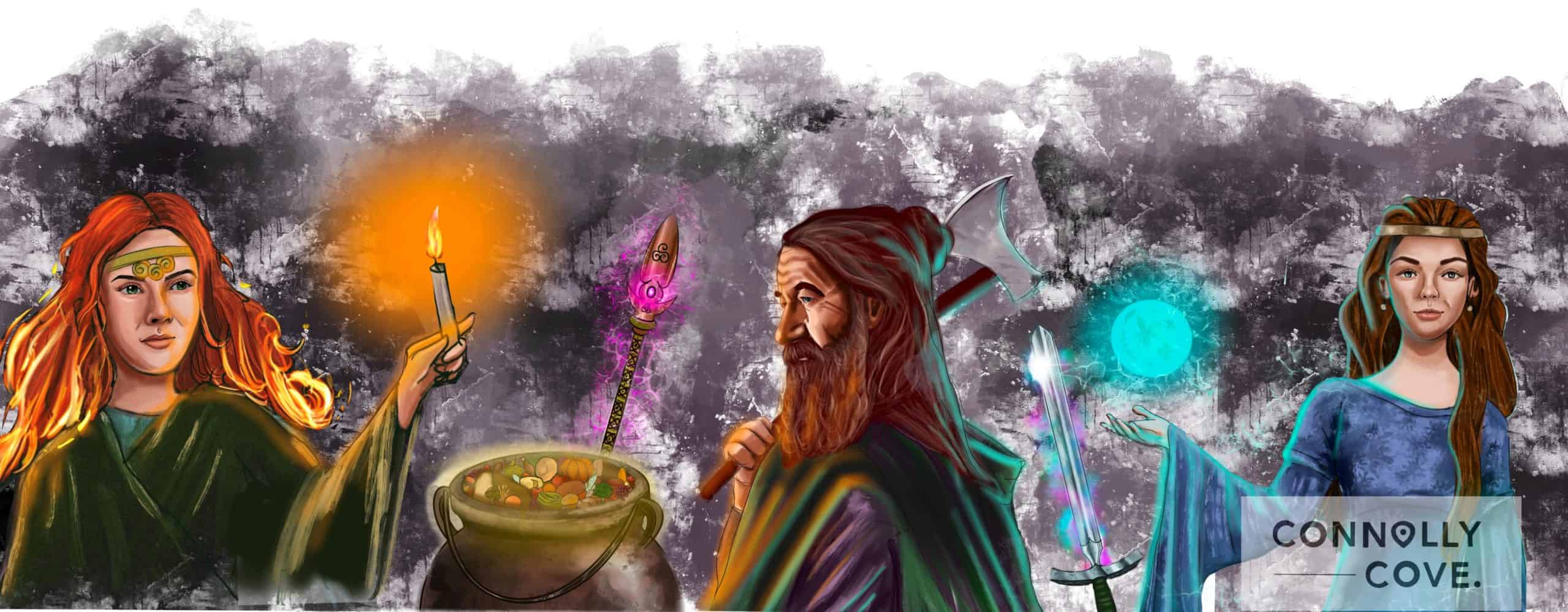
Updated On: April 22, 2024 by Ciaran Connolly
Polytheism was the central belief system of the Celts. It was the most popular religion, and people worshipped many different Celtic Gods and Goddesses. Each god represented something important in society, such as life, death, the seasons, weather, and wars.
Most Irish people have descended from the Celts, a central European group that invaded and took over Ireland during the Iron Age, estimated at around 500 BC. They thrived until 400 AD when Christianity arrived in Ireland. During the many centuries that followed, the Celts occupied Ireland, embedding their religion, customs, and art into what is now thought of as Gaelic culture.
The Arrival of Christianity
When Christianity arrived in Ireland, Celtic polytheism/paganism was replaced. Christian monks, however, were the first to transcribe the mythology and record the history of Ireland. Some of the details and characters of the stories were altered to suit Christian ideology better.
This and the stories passed from mouth to mouth for generations have resulted in many versions of the same mythos. From different periods to distinct endings, one thing that remains consistent is the many different Pagan and Celtic gods in the legends.
Some deities worshipped were common among different cultures, but the Celts had unique gods, too. There is much to learn about polytheism and how it affected the Celtic community culturally and traditionally.
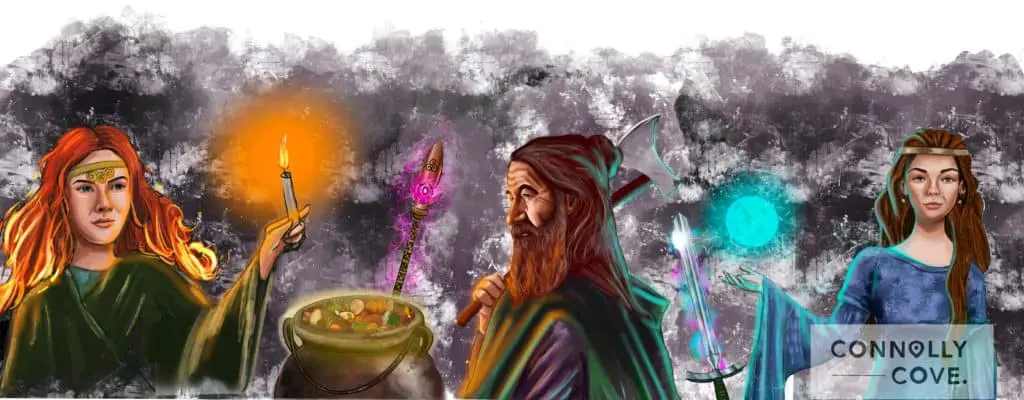
Below, we have attached a list of Celtic Gods and Goddesses and their role in mythology. In this article, you will find information on Celtic Gods, Goddesses and other relevant topics. Just click on any linked name on our list of Celtic gods to skip ahead to a detailed description of the God or Goddess:
Important Celtic Gods and Goddesses List
Who were the Celts?
The Celts were an Indo-European ethnic group in Europe, known as the Celtic communities. They used to speak the Celtic language, which has become modern-day Irish and Scottish Gaelic, Breton, and Welsh.
The Celtic world included Ireland, Scotland, Cornwall, Wales, the Isle of Man, and Galicia. Despite their differences, they shared similarities, including mythology, customs, and religion.
The Celts embraced polytheism, worshipping many Gods. Moreover, they shared the same gods and goddesses across seas, countries, and even Celtic borders. Many Celtic Gods parallel or appear in some shape or form in Roman, Germanic, Norse, and Greek mythology.
Different Groups of Celtic People
People mistakenly believe that the Celts are a reference to the Irish alone. However, as we have established, the Celts were a tribe that expanded across Western Europe. There is evidence of six different Celtic groups worldwide under two main umbrellas: the Brythonic Celts and the Gaelic Celts.
The former half is known as the British Celts, including the people of Cornwall, Wales, and Brittany. They are also referred to as Cornish, Welsh, and Bretons.
On the other hand, the Gaelic Celts include Ireland, Scotland, and the Isle of Man, known as the Manx. There is a seventh Celtic nation in Spanish Galicia. However, these people no longer use the Celtic language; thus, there is less evidence of Celts in the area.
Modern Celtic People and Their Symbols
Celts used Celtic symbols to recognise one another. Not only could they recognise each other, but they also knew which Celtic group a person descended from. The Celts were generally fond of arts and patterns. They were also known for specific instruments, especially the harp.
While evolving a symbol for each Celtic group, icons were used to identify each tribe. For example, the Welsh flag is green and white with a red dragon and a daffodil. On the other hand, the Scottish symbol consists of thistles and tartans. The Irish symbol is either a shamrock with three leaves or a harp.
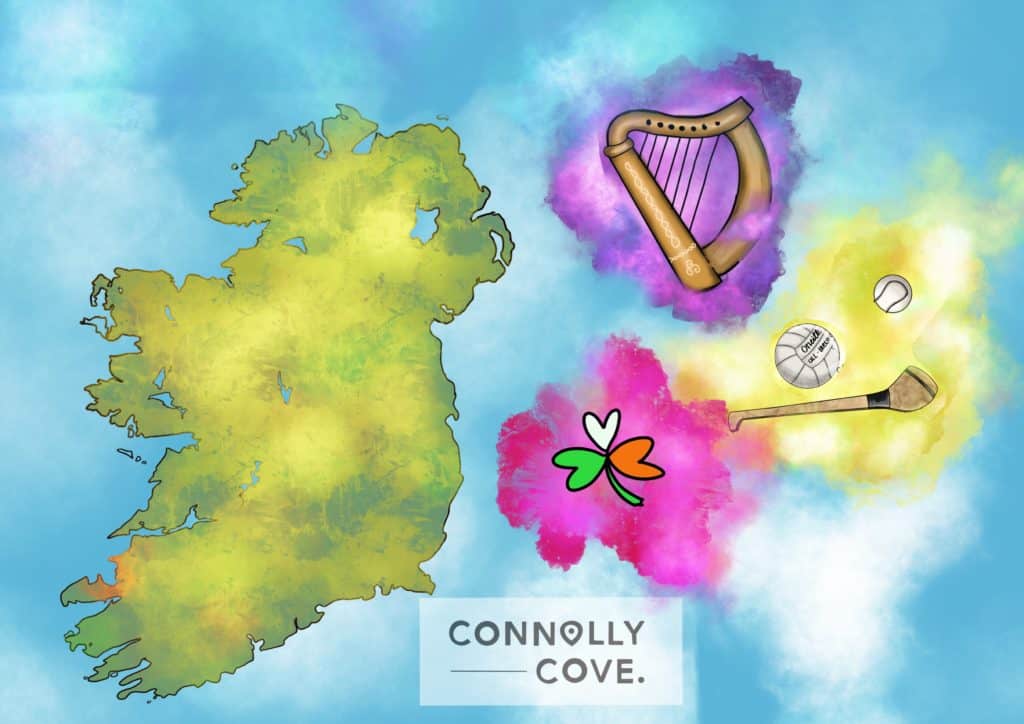
The Role of Polytheism in Celtic Mythology – Ireland Paganism
Polytheism means worshipping several deities. The word Poly itself is Latin, meaning “Many”. Pre-Christian Ireland was also known as the Pagan times.
Mythology played a significant role in shaping Celtic art, cultures and customs. Conversely, mythology was affected by societal beliefs. While skimming through Irish folklore, you will find a long list of Celtic gods and goddesses.
The Celts also believed in magic, the Otherworld (called Tír na Óg, as discussed in Niamh Cinn’s section of this article) and the Afterlife.
Each Celtic God had a role that reflected an essential part of society. A good harvest could be the difference between life and death, so it makes sense that the Celts would want to honour Gods they believed could control the seasons in their favour.
Major Celtic Gods and Goddesses
Celtic gods and goddesses exist for almost everything, from war and death to life and healing. There may even be more Gods we haven’t heard of as they never made it to our modern times or into recorded history.
Below are the major Celtic gods and goddesses in Celtic mythology. Learn everything about them, the meaning of their names, and their roles in Irish mythology.
Just so we can be clear, paganism still exists in modern times—just at a much lower rate than it used to be a long time before the arrival of Christianity. So, some of the Celtic gods and goddesses you are about to learn about are still part of modern Pagan practice.
Irish Mythology is broken up into four cycles to help divide the expansive mythos into distinctive periods:
- The Mythological Cycle
- The Ulster Cycle
- The Fenian Cycle
- The Kings Cycle
The Etymology of the Word God in Irish
Did you know that Dia means God in Irish? Bandia means goddess in Gaelic (ban or bean is the Irish word for woman). It’s also interesting to know that Dia dhuit is the term for ‘hello’ in Irish. It translates to ‘God be with you’. However, every Irish speaker uses it as a casual greeting more than a literal Irish blessing.
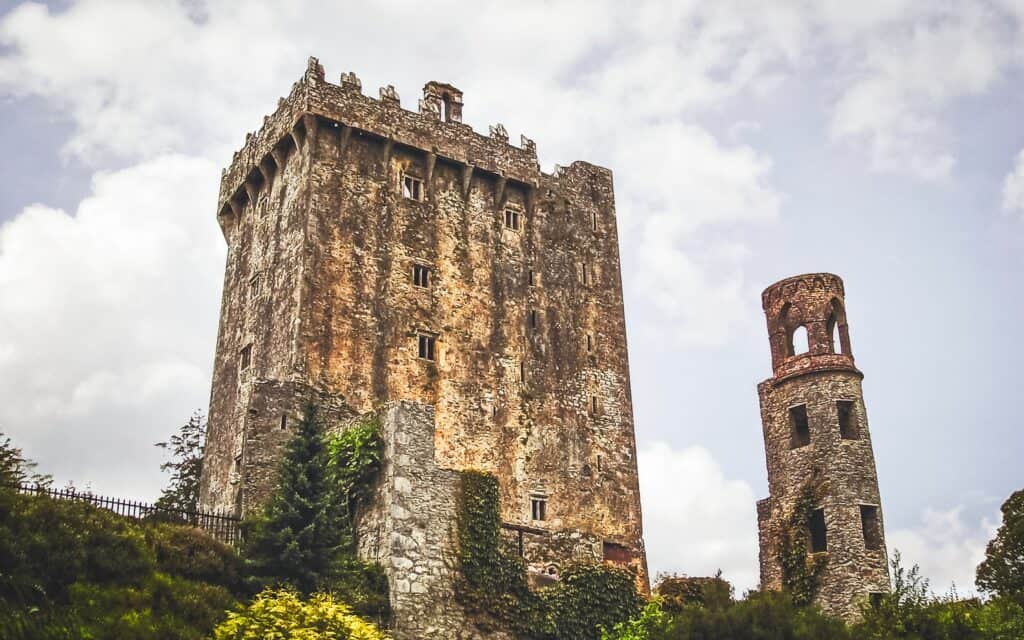
To learn more about the Irish Language, check out these articles: Irish Farewell Blessings and How To Say Goodbye in Irish.
The Tuatha de Danann – Irelands Ancient Supernatural Race
Most Celtic Gods and Goddesses were members of the Tuatha de Danann, one of Ireland’s most ancient and supernatural tribes. They were both the Gods of the Celts and ancestors of an ancient Irish people.
The Tuatha de Dannan were a group of Celtic gods and goddesses descended from Nemed. Initially, they were Irish, but they were exiled and scattered worldwide. When Danu, the original Celtic Goddess, learned about them, she supported them. They lived under her patronage in a mystical country (which may have been the Otherworld called Tír na nÓg), where they learned magical skills and mended their broken strength.
A Return to Ireland
From the Goddess Danu, the tribe learned wisdom and magic, which they used to return to Ireland. The Tuatha de Danann were famous for their skill at art, craftsmanship, and magic. Danu taught them to appreciate the arts and beauty in nature and to be fierce warriors, which is necessary for their survival and return to Ireland.
When the exiles decided to return to the island of Ireland, now calling themselves the Tuatha de Danu (tribe of Danu), they travelled on a magical mist. It was said that this mist was metaphorically Danu’s embrace for the tribe, which showed her endless support for them and reminded them how she helped them regain their power and wisdom.
Another theory is that the mist was black smoke as the tribe burned their ships once they arrived in Ireland, maybe as a symbol that they were not leaving the island again.
The Fairies of Ireland
Later, the Celtic gods and goddesses of the Tuaths were sent underground (it is speculated that they could travel to the otherworld by sea or go underground in Ireland through fairy trees and ancient burial grounds), once again exiled from Ireland. Over time, they became the sidhe, more commonly known as the fairies of Ireland.
On our website, you will find the ultimate guide to the Tuatha de Danann and its most prominent members!
While most Celtic gods were forgotten or vilified with the arrival of Christianity, other Celtic gods survived due to their unwavering popularity. They became Christian Saints or acceptable versions of their Celtic origin.
Goddess Danu
Goddess Danu was the mother of the Celtic Gods. She is among the most ancient Celtic Gods and was revered by other Gods and mortals. However, despite her popularity and significance in Celtic mythology, Danu does not appear in many stories.
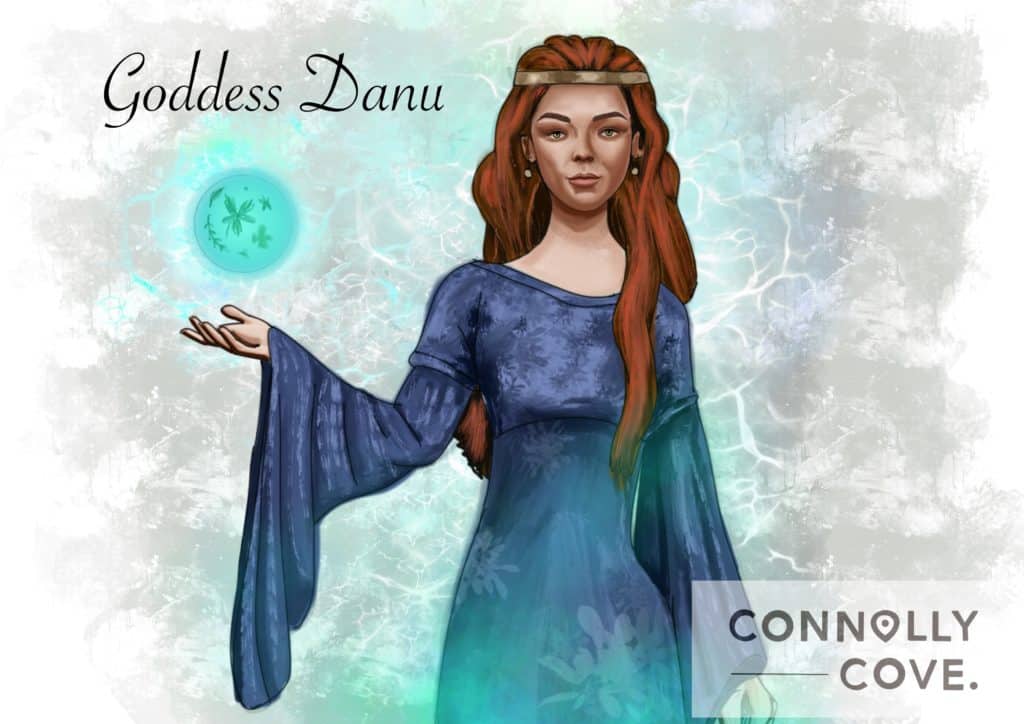
Danu was the goddess of earth and fertility. The Tuatha de Dannan, the famous race of supernatural Celtic gods, literally translates to the tribe of Danu or the tribe of the Gods.
Danu didn’t show it often, but another aspect of her abilities was being a sturdy warrior goddess. Her name “Dan” originates from ancient Irish words meaning skill, art, and poetry. Dán is still the Irish word for ‘poem’ in modern Irish, which is quite fitting!
Goddess Danu appears in minor roles in many different stories. None of the stories in which she had significant roles survived, but her characteristics were pieced together from known appearances in the mythos.
Some legends claim that Danu is the mother of the Celtic god Dagda. That was narrated in a story in which Goddess Danu appeared with the god of light and healing, Bile. The latter was a pure representation of a holy oak tree; Danu nurtured and fed the tree. According to legends, their union gave rise to the birth of the Dagda.
In other legends, Dagda is depicted as the husband of Danu, which makes more sense as he is known as the Father God and is usually the agreed version of the myth. The birth of Dagda could parallel the Christian story of Adam and Eve, as the Christian monks who transcribed the story may have altered details.
Anann – Goddess of fertility, prosperity, and comfort
In Irish mythology, Anann, also known as Anu, is one of the Celtic goddesses associated with fertility, prosperity, and comfort. She is a mother goddess closely tied to the land and its abundance. Anann is also believed to be one of the Tuatha Dé Danann, a mythical race of divine beings in Irish folklore.
As a goddess of fertility, Anann is often associated with the fertility of the land, livestock, and people. She is believed to have control over the growth cycle, ensuring bountiful harvests and the well-being of animals. Her presence brings abundance, prosperity, and harmony to the land and its inhabitants.
Anann is also associated with comfort and healing. She is said to possess excellent knowledge of herbalism, can cure diseases, and provide solace to those in need. She is often invoked for her healing powers and the comfort she brings to individuals during illness or distress.
While Anann is primarily known as a goddess of fertility, prosperity, and comfort, she is also associated with sovereignty and the protection of the land. In this aspect, she represents the divine authority and guardianship over the land, ensuring its prosperity and well-being.
Anann’s presence in Irish mythology reflects the deep connection between the people, the land, and the natural world. She embodies the nurturing and life-giving aspects of the land and its cycles, emphasizing the importance of fertility, abundance, and harmony in the Irish cultural and agricultural traditions.
The Daghda (The Father God of Ireland)
Either known as the Daghda or the Dagda, this God is one of the most essential Celtic Gods in Irish mythology. He is the father figure of all the Celtic gods and goddesses. The Daghda is one of the members of the Tuatha de Dannan, a mythological race of supernatural gods and goddesses.
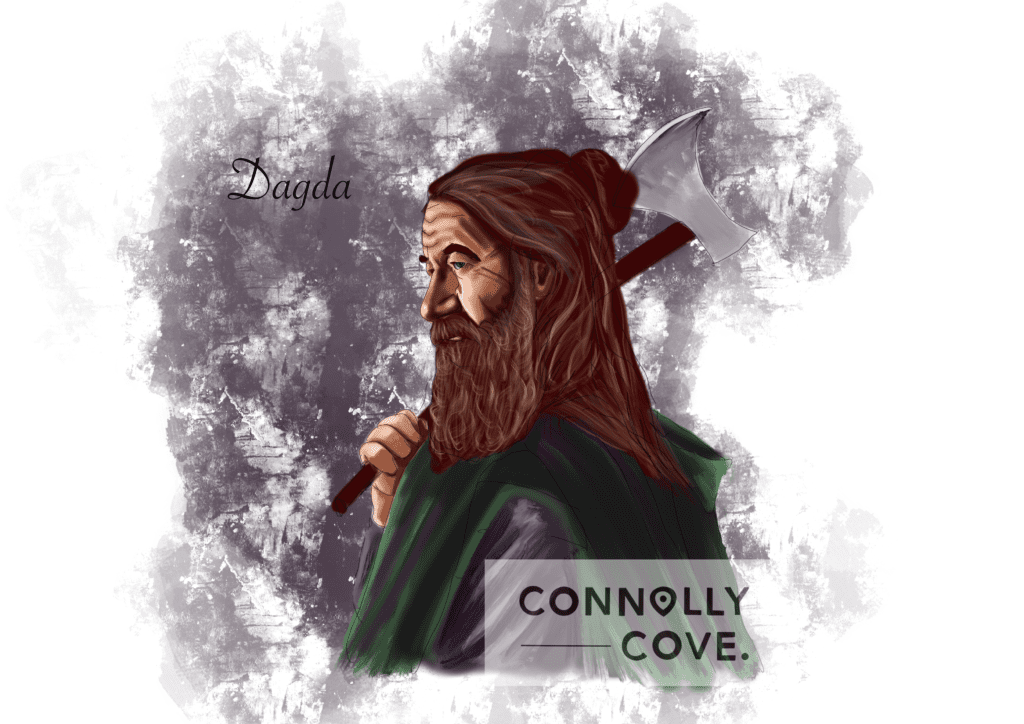
Dagda had many abilities, including controlling life, death and resurrection. That alone gave him power over almost everything, yet he was also known for his wisdom, strength and love of the arts. Moreover, the Dagda was linked to fertility and magic. He had control over the seasons, time, crops, and weather.
Considering all of this, honouring the Dagda seems like a no-brainer for the Celts. Donn, a Celtic God of the Dead, is thought to be an aspect of Dagda.
The Etymology of the Name
The Celtic gods’ names have a meaning, and the Dagda is no exception. Generally speaking, his name means the Good God and some claim that it also means the Great God, not necessarily because of his excellent nature but because he was highly skilled at everything he tried.
In the Proto-Indo-European language, the word “Dhagho-deiwos.” Many believe that the Dagda is one derivation of that word, which means the shining divinity. The first part of the word sounds like the English word “Day.” This makes sense, considering that the Celtic God Daghda was identified with his ability to change time and weather.
The Portrayal of the Daghda
While the Dagda was one of the Celtic Gods of agriculture and wisdom, he had counterparts from other cultures. These included Odin, the Germanic / Norse God; Dis Pater, the Roman God; and Sucellos, the Gaulish God.
While reading about Celtic Gods, you will always find that the description of the Dagda is about size and power. Legends say that the Dagda was a large man who emitted mystery with a face barely visible under his hooded cloak and sizeable bushy beard.
This made his facial features less visible, creating even more mystery. Unlike other Celtic Gods described as beautiful, Dagda’s depiction is often humorous, not precisely how many all-mighty Celtic deities are depicted.
The Four Treasures of the Tuatha de Danann
The Celtic gods were famous for owning magical tools and weapons. The Dagda owned three notably magic things: a harp, a club, and a cauldron.
The magical harp could change the seasons and control people’s emotions. One of the earliest myths revolves around Dagda’s harp being stolen and his attempts to recover it.
Dagda’s magical club was arguably the most powerful weapon and is considered one of the Four Treasures of the Tuatha de Danann. Its two ends killed and resurrected the dead, granting him power over life and death. Lastly, he had a cauldron that never ran empty, no matter how much he used it.
When the Tuatha de Danann first arrived in Ireland, they brought 4 treasures from the 4 major cities of their homelands, which is believed to be the Otherworld, or Tír na nÓg. Dagda owned the first of these treasures, his magical Cauldron, which provided infinite nourishment.
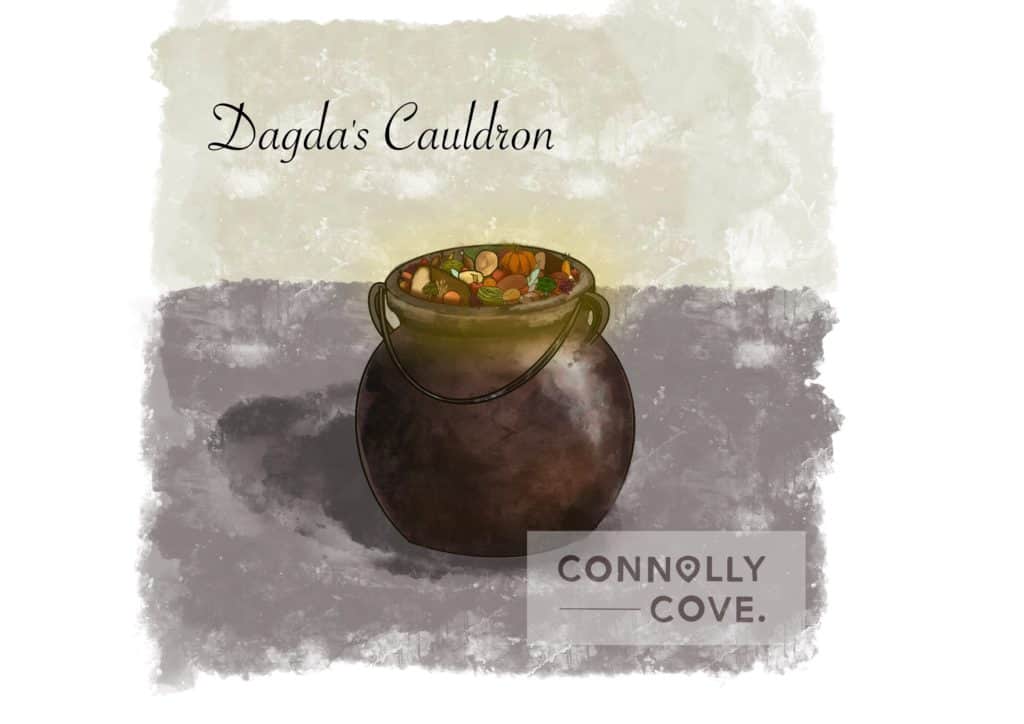
The Four Treasures of the Tuatha de Danann
- Dagda’s Cauldron
- Sword of Light
- Lugh’s Spear
- Stone of Fate
The God-Kings of the Tuatha de Danann
Nuada of the Silver Arm
Nuada was the first king of the Tuatha de Danann, even before the Tribe arrived in Ireland. His reign continued until the battle against the firblogs. Nuada won the battle but lost an arm.
The Tuatha de Danann customarily required their king to be ‘unblemished’. That is, any injuries meant a king could not rule. Because of this rule, Nuada, a trendy king, had to forfeit his throne.
Miach, the son of Dian Cecht, a healing god, created a metal arm for Nuada. The result of Miach’s achievement would cause his demise. Nonetheless, it took seven years to make, and a new king reigned.
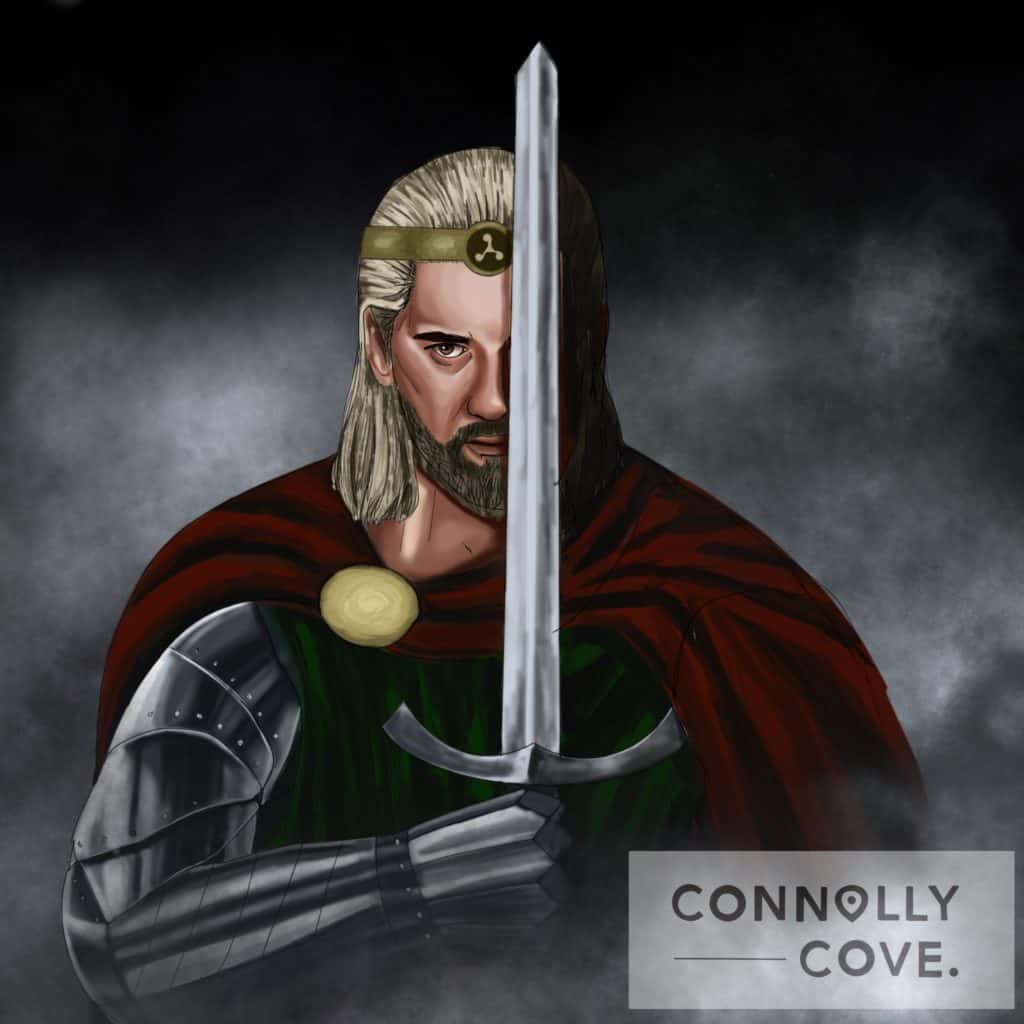
Breas
Breas took over for Nuada as king of the Tribe of the Gods. Breas was half Tuatha de Danann and half Fomorian. The two tribes were sworn enemies, so Breas was appointed to bring a new era of peace. His heritage would lead people to believe he would be fair to both tribes, especially since he married the Goddess Brigit of the Tuatha de Danann. However, this was not the case.
Breas, king of the Tuatha de Danann, favoured the Fomorians. With the help of their king, Balor, the giant with three eyes (one of which was poisonous), they ruled over the Tuatha de Danann, enslaving them to the Fomorians.
Breas reigned for seven years until Nuada returned. With his new arm, Nuada was considered whole again and fit to retake his throne. However, Breas would not lie down while his kingship was revoked and fought for his throne. Fortunately, Nuada won and reigned for many years after.
Lugh, The Celtic God of the Sun (Master of Skills)
Among the many Celtic gods lies the master of skills, the Irish sun God Lugh. His many skills were the reason he had more than one name. Lugh Lámhfhada, or Lugh of the long arm in English, was the name he was most known by. It related to his iconic spear.
Other names include the Fierce Striker, Skilled in All Arts, and the Skilful Hand. All of his skills involved using his strong arms. His first name is written differently than Lugh, Lugos, or Lugus. It is pronounced as ‘Loo’.
The ancient Romans believed there was a link between the Celtic God Lugh, the Roman God Mercury, and Hermes, the Greek God.
Lugh is the Celtic God of sun and storms – particularly thunderstorms. He was also a mighty warrior who possessed many skills.
Lugh is one of the significant Celtic Gods and champions. A champion is a person who has surpassed all rivals in a sporting contest or other competition. Lugh was seen as the tribe’s best warrior.
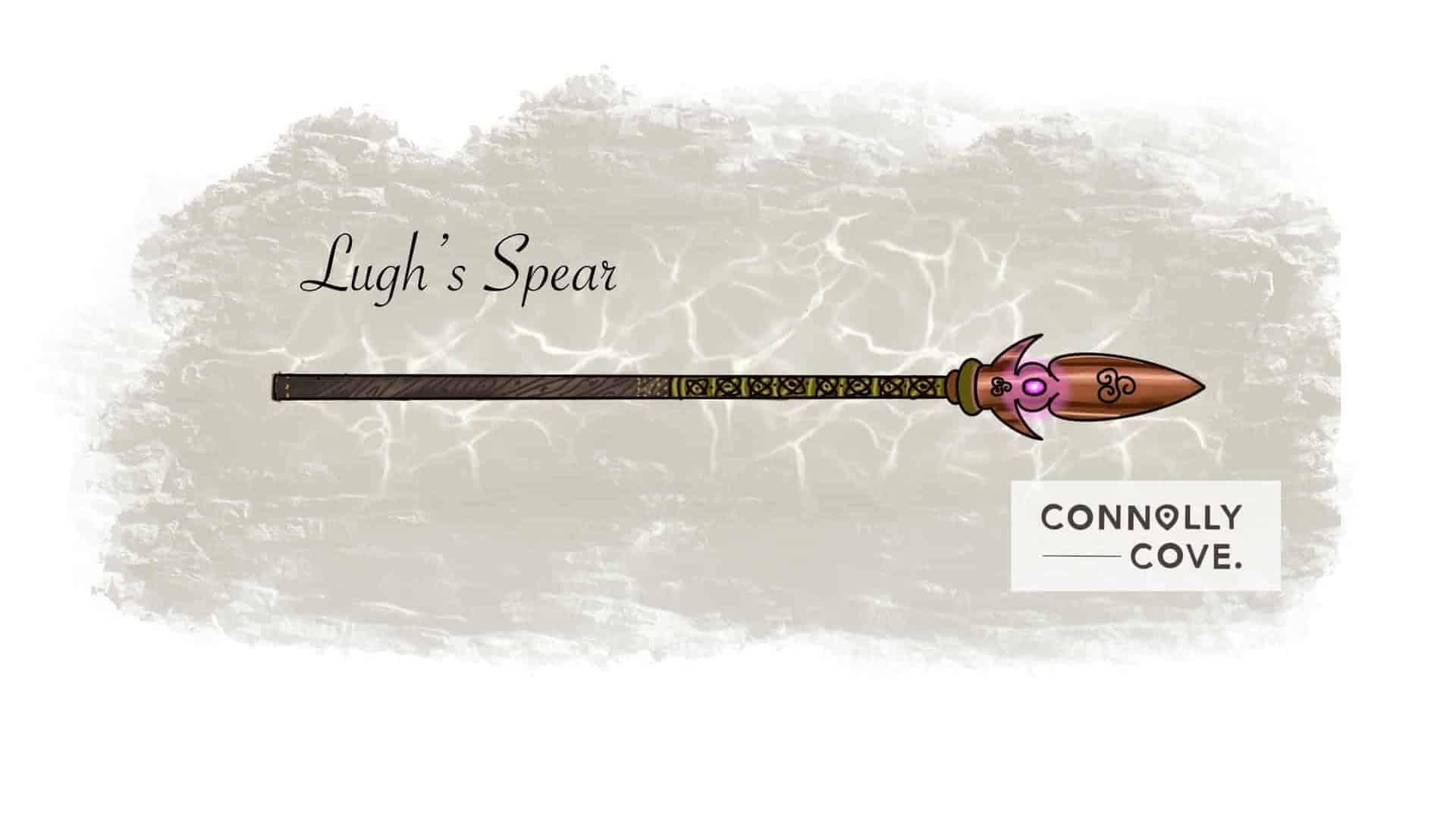
Lugh also owned several animals, including a magic hound, raven, lynx, and crow. Aside from animals, he possessed more than a few magical weapons, including an invincible spear, one of the treasures of the Tuatha de Danann.
His spear is also the reason Lugh is known for having a long and sturdy arm. He used the spear to hit his target, and it was said to be impossible to overcome. It never missed a target.
Lugh’s Family Members of Celtic Gods
Celtic Gods are often related to one another. Lugh is associated with the Gaelic Goddess Danu. His father was Cian, who happened to be Danu’s son. Thus, Danu was his paternal grandmother, and his grandfather was Dian Cécht of the Tuatha de Dannan. Lugh’s mother was Ethniu, a half-Fomorian whose father was Balor, the leader of the Fomorians.
Lugh’s grandfather was known as Balor of the Evil Eye. According to the legends, Balor knew at some point that his grandson would murder him thanks to a prophecy from his wife, Caitlín. Thus, he wanted to ensure his only daughter, Ethniu, would never have a child.
He had to lock her up in a tower far away from people’s eyes. However, Cian managed to find and release her, upsetting Balor even more. Ethniu and Cian had three baby boys.
When Balor learned about his grandchildren, he planned for their murder. He did not kill the babies himself but ordered someone else to do it. One child, Lugh, was miraculously saved. Balor never knew that his grandson was alive, for Tailtiu, a member of a different tribe called the Fir Bolgs, took and raised him secretly. The truth was only revealed when Lugh managed to kill his grandfather.
Other members of Lugh’s family are his many wives. Lugh married many women and had many children. His wives include the two daughters of Ruadri, the King of Britain, named Nas and Bui.
He also married Rosmerta, Echtach, and Englic. Lugh had several children, yet his most famous one was Cu Chulainn, who was thought to be an incarnation of God. The hero was known as the Irish Hulk because he was a fierce warrior.
He is one of the most famous figures in Celtic mythology. Still, he didn’t realise he was the son of a God until the cattle raid of Cooley, a legend starring Queen Medb, another popular character who is thought to be the incarnation of a goddess.
The Story of the Hall of Tara – Lugh, the Champion of the Tuatha de Danann
Like other Celtic Gods, Lugh grew up realising he had many skills. He was capable of almost everything and wanted to join the Tuatha de Dannan. Nuada was their High King at that time. Lugh headed to the Hall of Tara, asking to join the king’s court, but the guard at the door did not let him in.
The guard claimed he could only let him in if his skills were helpful to the king. Lugh started listing his skills only to hear the guard say they already had experts in all of those skills. However, when Lugh claimed he was the only man with all those skills, the guard granted him access. Lugh was a physician, champion, historian, poet, writer, smith, sorcerer, and more.
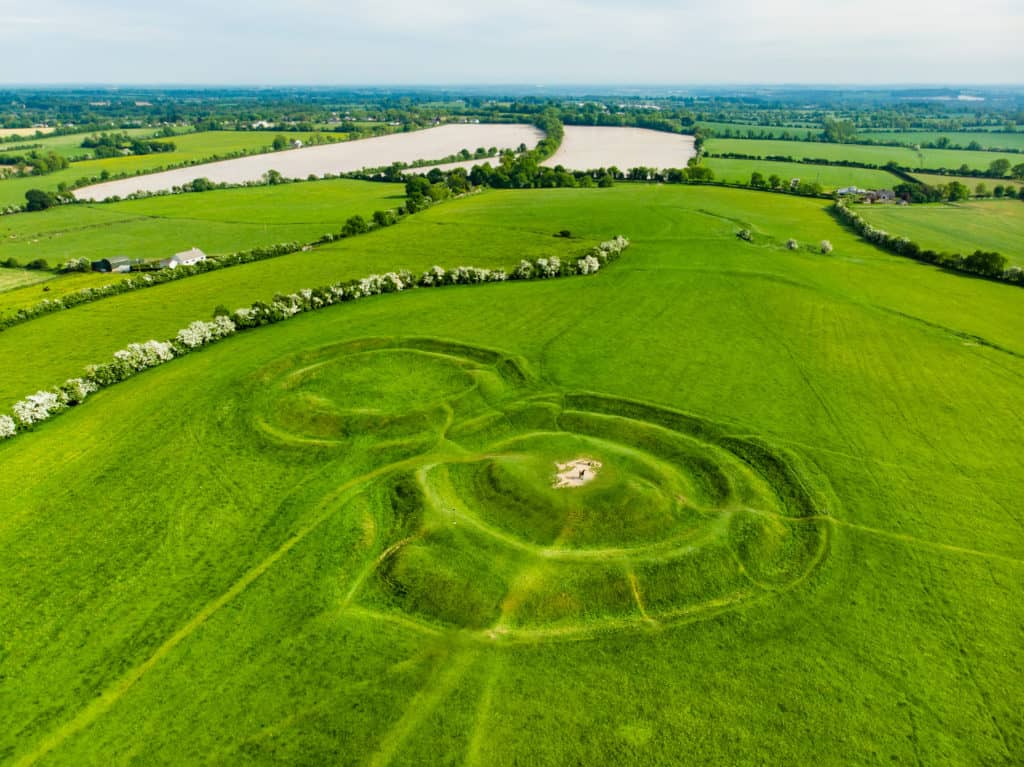
The Third King of the Tuatha de Danann
Now that he was one of the Tuatha de Dannan, Lugh joined in battles against the Fomorians. Little did he know that the leader of the Fomorians, Balor, was his grandfather. In the Second Battle of Mag Tuireadh, Balor murdered the High King of the Tuatha de Dannan, Nuada.
Lugh avenged his leader’s death and killed Balor despite his poisonous eyes. The Celtic god of the sun then became the High King of Ireland.
Lugh fulfilled the prophecy that Balor would be killed by his grandson, and being a half-Fomorian half-Tuatha de Danann, he was a much more likely candidate than Bres to bring peace to Ireland. Lugh was a patron God of truth, oath and law; he was the leader the people of Ireland deserved.
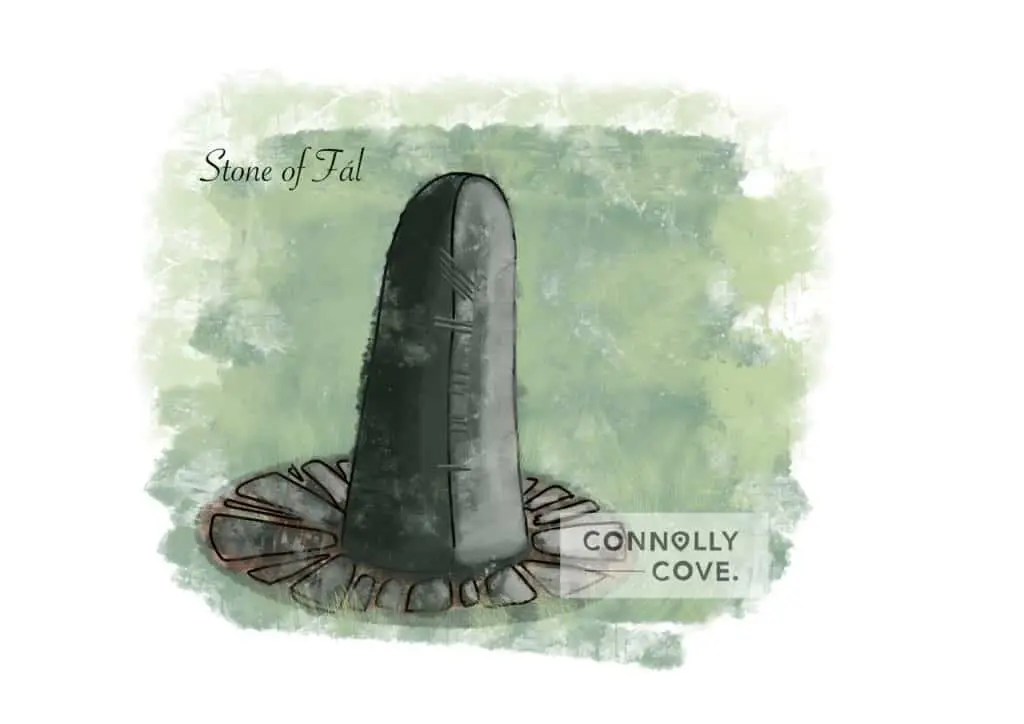
The Harvest Fair of Lughnasadh
The Celtic world celebrates four different festivals corresponding to the year’s four seasons. These festivals are mostly related to Celtic Gods or Goddesses. One is named after the God Lugh, the Lughnasadh Festival.
In honour of his foster mother, Tailtiu, Lugh held a harvest fair, which would become an annual celebration. It takes place on 1 August; its name translates into The Festival of Lugh.
Additionally, the month of August in Irish is called ‘Lunasa’ after the God Lugh. During this time, the year’s first harvest takes place in the Northern Hemisphere. The Celts celebrated the harvest symbols: grains, corn, and bread. The celebration usually included singing, dancing, and lighting bonfires.
The four Celtic festivals are Imbolc (February), Bealtaine (May), Lughnasa (August) and Samhain, which is now modern-day Halloween!
The Morrighan (The Celtic Triple Goddess of Battle and War)
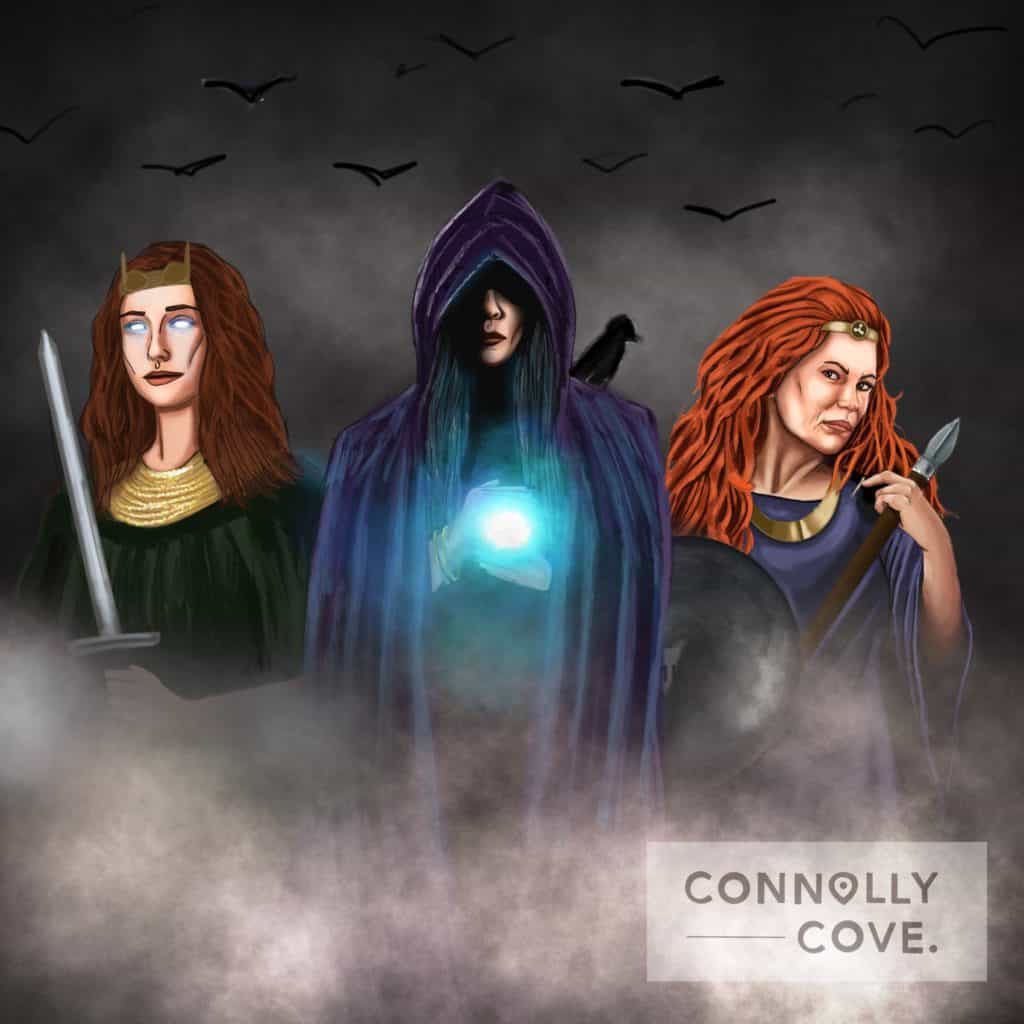
The Morrighan is one of the significant Celtic Goddesses associated with wars and battles. Also known as Morrigu, Morrigan, and Mor-Rioghain. She is also a Celtic Goddess of magic and mysticism.
In Celtic mythology, she is famous for taking the form of a raven or a crow. Sometimes, she is seen accompanying a group of them. However, some stories of the Ulster Cycle claim that she turns into a cow and a wolf rather than a crow.
Her connection with these specific animals advocates that she might as well be the goddess of fertility and land. Regardless, she can shapeshift easily and uses this ability to her advantage.
A flock of crows is known as a murder of crows. This could be a reference to the Morrigan, who used to fly over battlefields in the form of a cross, an omen of death.
Legends claim that Morrigan is a triple goddess with two sisters, the Badb and Macha.
Despite her popularity as the war goddess, some scholars believe her connection to war was only a form of protection. Some legends refer to her as “The Washer at the Ford”. That’s because she was the sign of death to warriors if one saw her washing his armour. It was a sign that he was going to die on that day.
She also had control over the outcome of battles. Winning over the favour of the Morrigan could ensure victory.
She rarely interfered with war directly, flying over the battleground as a crow. Fighters would dread to see her fly above them, fearing it was a sign of their death. After the battle, they would wait a day to bury their comrades, letting Morrigan claim their souls first.
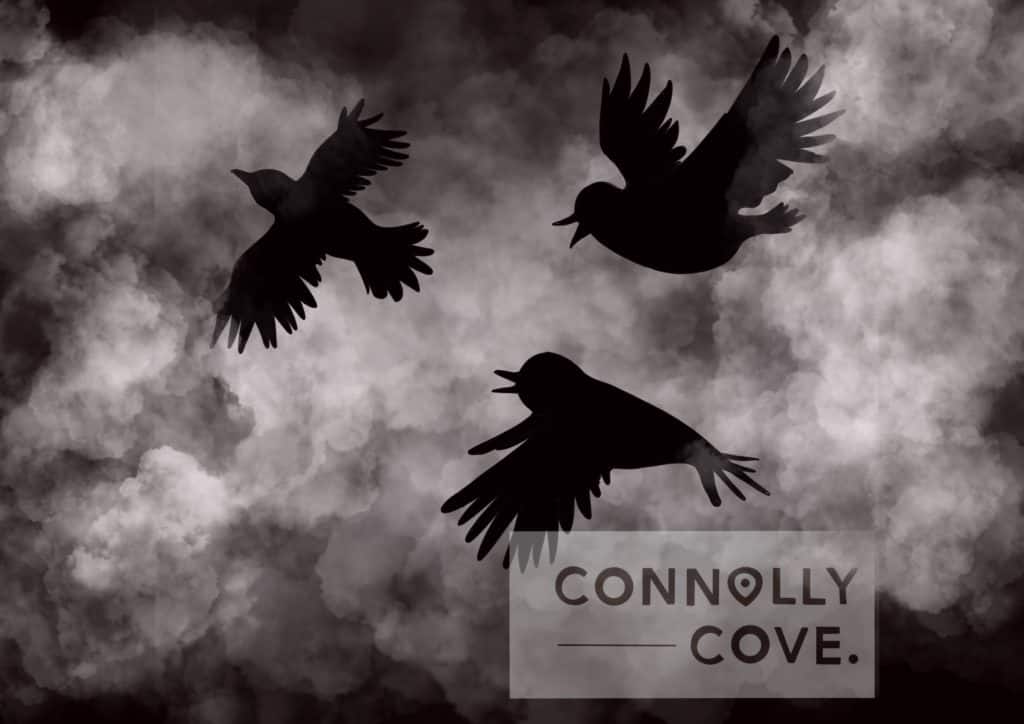
The central mythos of Celtic mythology describe Morrigan as three sisters. However, their names often vary. Depending on the tale you read, Morrigan, Morigú, Morrigan, Macha, Nemain, Badb, Medb, Anaid, Ériu, Banba, and Fódla are all possible names.
Regardless, the sisters were three distinct powers with different abilities.
Morrigan / the Badb / Anand
Etymology of the Name
The term “The Morrighan” translates into the Phantom Queen. Scholars also suggest that this term can be translated into the Great Queen. The meaning fits the portrayal of this Celtic Goddess since she powerfully represents the circle of life. Aside from being a queen, she also was famous for shape-shifting.
The Morrigan is the term given to Goddess Morrigan, one of the triple Goddesses, andio itself in Celtic mythology. She represented the circle of life and was associated with birth and death. She is also described as being the patroness of revenge, magic, priestesses, night, prophecy and witches.
Identifying the Morrigan with Other Celtic Goddesses
Mary Jones of the Celtic Literature Collective had an opinion regarding the triple goddess, the Morrighan. She believes that this Celtic Goddess, in particular, is a complex figure in Irish mythology.
In the book Lebor Gebala Erenn, three different versions of events feature the three sisters, Badb, Macha, and Annan. In each version, the Morrighan is identified with one of them.
For example, Anann is identified with the Morrighan in the Leinster Version, yet it is Macha in the Fermoy version. Thus, the Morrighan was not one of the three Goddess sisters, but it was a name applied to those three sisters. Each woman becomes the Morrighan in different manuscripts. They are seemingly both three individuals and one person.
Another source claims that the number three has tremendous significance in Celtic mythology. That could be one reason why The Morrighan sometimes appears in the form of three sisters. However, there are times when she appears as a singular figure.
Morrigan as the Banshee
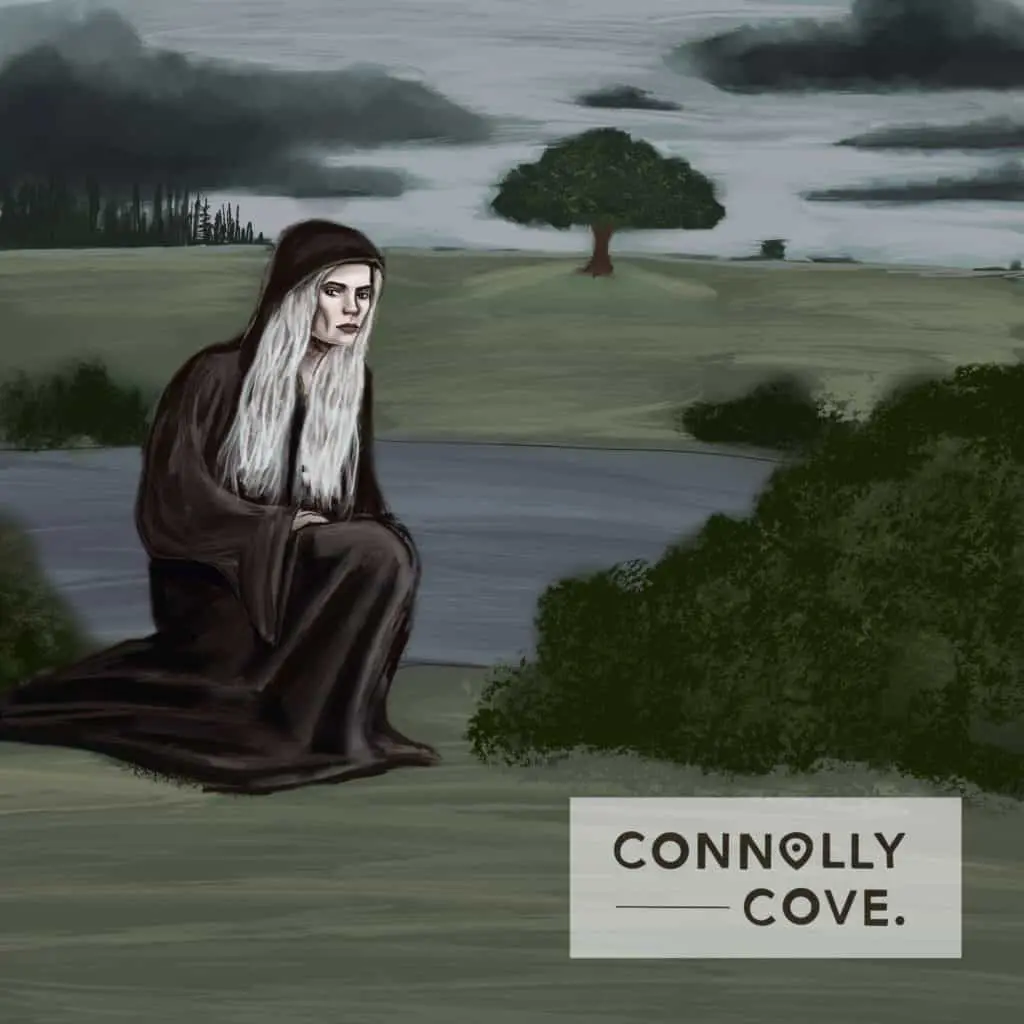
In some stories, the Morrigan is sometimes associated with the Banshee, mainly because she is seen washing armour by the river before the battle. The Banshee is a type of lone fairy descended from the Tuatha de Danann. The Banshee is seen as nothing more than a similarity and general association with death.
It is worth noting that the Morrigan was a shapeshifter and could transform into a banshee, but this is just a theory.
The Morrigan and Cú Chulainn
In folklore, the Morrigan and Cú Chulainn had an exciting relationship, as the goddess often foretold prophecies of his demise. She was enamoured with the hero, but her love was unrequited, so she frequently appeared as a foil to his epic adventures, casting some spell to thwart his victories.
Of course, being the hero he was, the warrior always emerged triumphant.
One of the most prominent stories of the Morrigan was the Myth of Cu Chulainn, in the story of the Cattle Raid of Cooley, a famous epic featuring Queen Medb of Connacht. The Morrigan fell in love with the mighty warrior and attempted several times to seduce him; however, he always rejected her.
The Morrigan never accepted that he rejected her, so she avenged her broken heart.
The Morrígan’s Revenge Starts
Goddess Morrigan used her ability to shift her shapes to distract Cu Chulainn and ruin his plans. Staying near him was her best way to gain inner strength; his blessings could heal the wounded.
She was a bull the first time she appeared to him after the rejection. She tried to make him lose track of his path and told him he had to run away. Cu Chulainn did not listen to her, and he kept going on his way.
The second time, she appeared as an eel and attempted to make him trip over her. His tripping would have helped her use her magic on him and gain strength. She failed once again, losing more power.
The third time, she changed her appearance into a wolf, trying to scare him and send him off his track, but she defeated her for the third time in animal form.
At last, she stopped changing into animals or strange creatures and decided to take human form after enduring many injuries in her previous animal states. This was her final attempt. She appeared to Cu Chulainn as a frail older woman whose job was milking the cows.
Cu Chulainn, weary from Morrigan’s trickery, could not recognise her. She offered him to drink from the cow’s milk, and he agreed. He was grateful for the drink and blessed the old lady three times after she gave him three drinks, restoring Morrigan to total health and strength.
In other versions of the story, Cú Chulainn was unaware Morrigan was speaking to him. After she is healed, he explains that he would never have insulted her by rejecting her so harshly if he had known who she was. Morrigan accepts his apology and leaves him alone.
Nemain / Badb
Nemain was part of the Tuatha Dé Danann. The modern spelling of her name is usually Neamhain or Neamhan. She was a goddess who interfered with battles and controlled the fight’s results according to her favour.
This means Nemain was part of the trio of goddesses that make up the Morrigan. However, most sources claim the triple goddesses were Macha, the Morrigan, and Badb. The only explanation that would make sense now is that one of them was Nemain. In other words, Nemain was one of the three goddesses; however, she was known by more than one name.
Macha
Goddess Macha was another member of the Tuatha de Danann. Mythology refers to her as the Celtic goddess of war or land. Crunnius was her husband, and people believed she was one of the triple goddesses. She was the mother of land and war.
Many tales confuse her and the Morrigan. Both usually appear as crows on battlefields and manipulate the battles’ results. However, Macha more famously appears as a horse.
Another similarity between the goddesses is that both were described as Washers at the Ford. The legend of the Banshee has connections with both of them.
The Three Versions of Macha
The Celtic folk tales feature three versions of Macha. Each version illustrated Macha with specific personalities and traits; they were all equally interesting. One common thing that the three versions claim is that Ernmas was her mother. However, the first version states that Macha’s husband was Nemed.
The literal meaning of his name is Sacred. Nemed invaded Ireland before the Tuatha de Danann. He fought the Fomorians and stayed in Ireland. Legends claim that a race, the Nemeds, resided in Ireland long before the Tuatha de Danann came.
The second version of Macha was that where people referred to her as Mong Ruadh. The latter means Red Hair. She had red hair in this tale and was both a warrior and a queen. In this version, Macha beats her rivals and has power over them. She forced them to build Emain Macha or Navan Fort for her.
Finally, the third version is the one we stated at the beginning. It was that version when she was Crunniuc’s wife, and it is the most popular one of all.
The Most Popular Tales of Macha
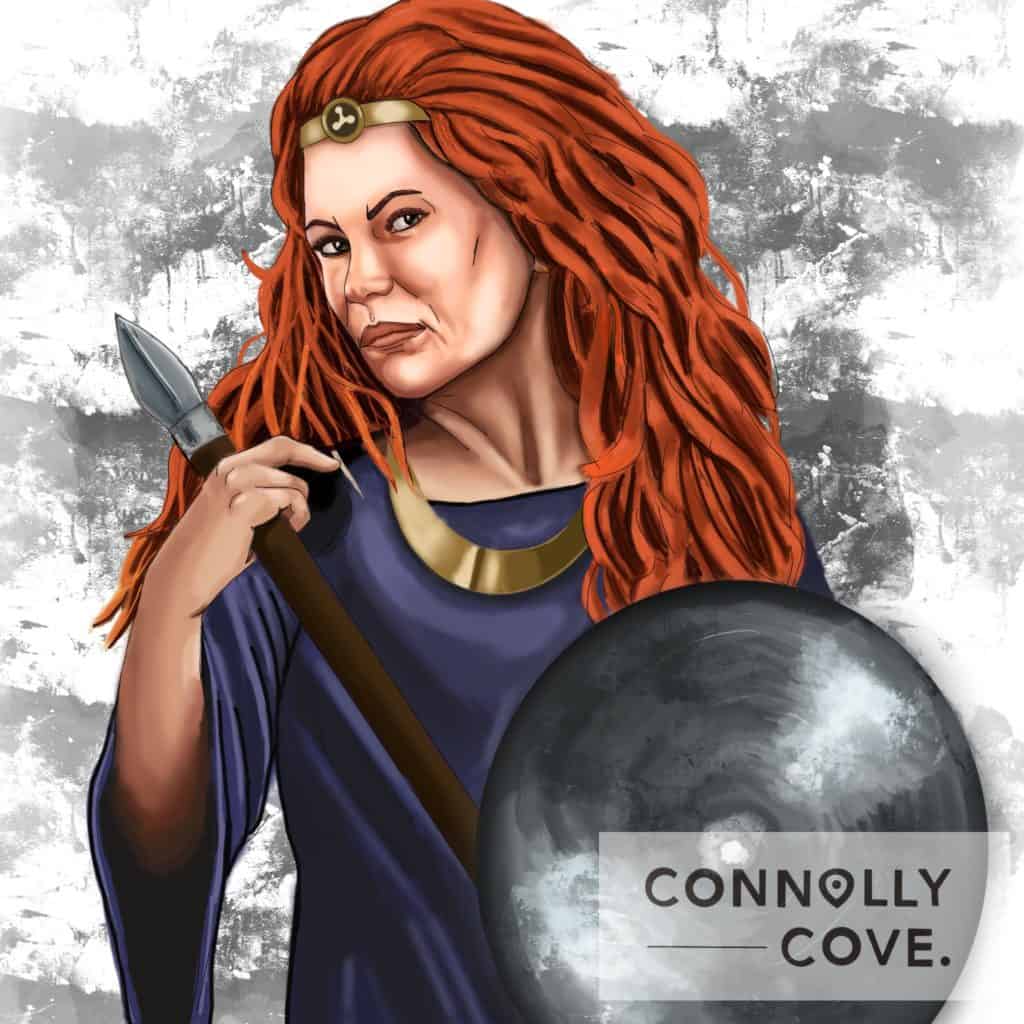
Macha appeared in several tales; however, a specific one was the most popular about her. In this tale, the third version of Macha is relevant. The story revolves around Macha, who has supernatural powers.
She could outrun any creature on earth, even the fastest animals. Crunniuc was her husband in that tale, and she asked him to conceal her magical powers. She did not want anyone to know what she could do.
However, her husband ignored her demand and bragged about his wife before the king of Ulster. The king seemed interested in the secret that Crunniuc had let out. Thus, he ordered his men to capture Macha, who was pregnant then. He wanted her to run against horses in a race, not caring about her condition as a pregnant woman.
Macha had to do what he asked her to do. She ran the race, and surprisingly, she won. However, her condition started to deteriorate as soon as she crossed the finish line. She gave birth at the end of the race, and she was in extreme pain.
One version claims that she died after giving birth to twins. The most famous scene is when Macha curses all the men of Ulster while she is dying. She wanted them to endure the pain of childbirth and suffer as they made her do.
Another version continues in the Cattle raid of Cooley, where Macha survives, cursing all of the men of Ulster as revenge for nearly killing her. This helps Queen Maeve of Connacht, who is at war with Ulster.
Mebh or Maeve is thought to be an incarnation of Macha, which we explain in our article devoted to Queen Maeve of Connacht and the Cattle raid of Cooley!
Often, Macha is seen as a separate Sovereignty Goddess, with the three Morrigana being The Morrígan, Badb and Nemain. This further supports her links to Queen Maeve, but what do you think?
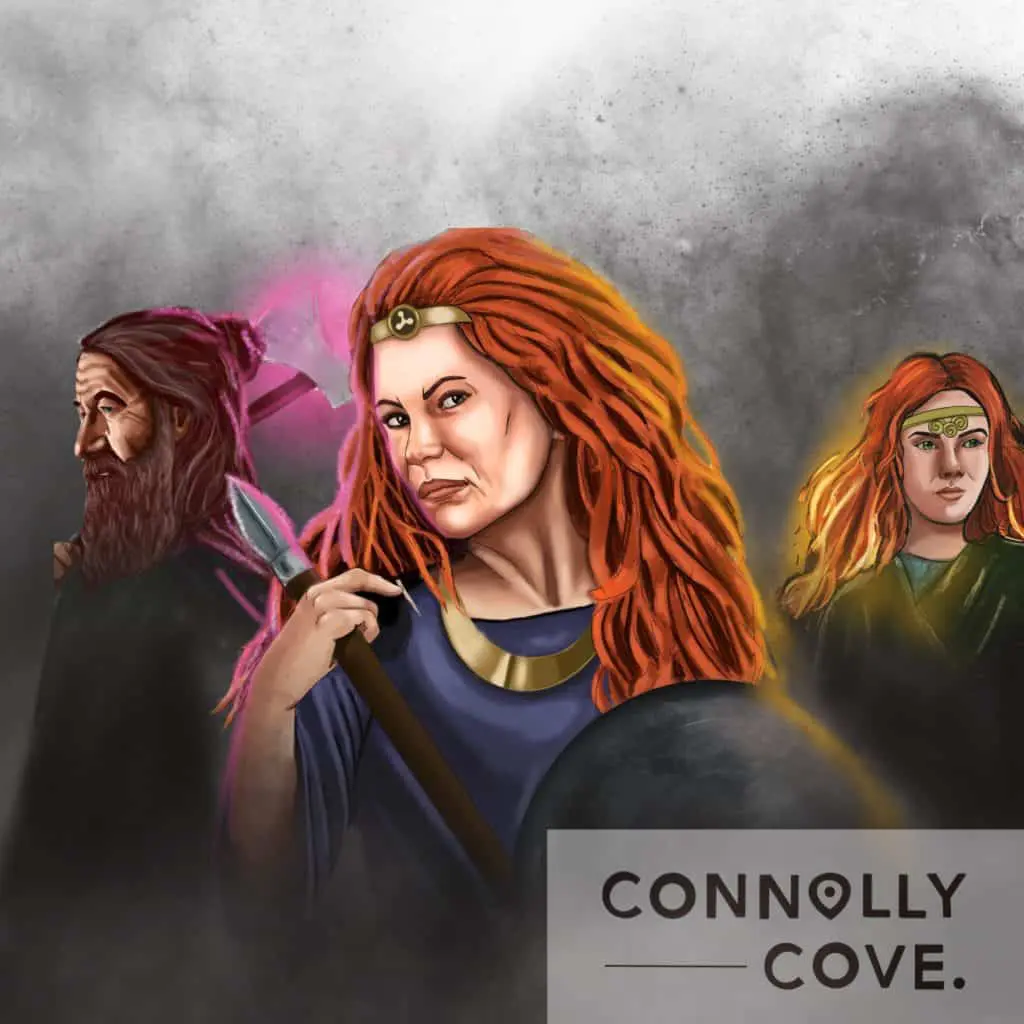
Neit, God of War
Neit was the husband of Nemain, a God of War and a member of the Tuatha de Danann. He was the grandfather of Balor of the Poisoned Eye, Lugh’s grandfather. Neit was a member of the Tuatha de Danann; however, his grandson was one of the Fomorians.
That was not surprising, as the same applies to Balor’s grandson, Lugh, who was from the Tuatha de Danann.
Irish mythology can be confusing, mainly because Gods lived much longer than mortals, so their relationships with each other often become muddled. Neit was also the uncle of the Dagda, and he gave him his Stonehouse. This place now is what people call the grave of Aed, another son of the Dagda.
Sometimes, mythology refers to Neit’s wife as Nemain, another goddess of the Tuatha de Danann. However, it sometimes claims that Badb was his real wife.
Some people believe that Badb makes more sense as Neit’s wife because she is the goddess of war, just like him. Nemain and Badb could also be the same goddess, as Nemain was considered a symbol of war’s havoc.
There is a shortage of Celtic Gods and Goddesses of War. Still, it is interesting to see that their roles often have less to do with fighting and more to do with specific aspects of war, be it havoc, protecting the innocent or inevitable death. The Pagan Goddesses of War are some of the best-preserved deities in Irish folklore, featured in many stories.
Ogma, the God of Language and Speech
Ogma or Oghma is one of the Celtic Gods of the Tuatha de Danann. He appears in similar Irish and Scottish mythologies. The two mythologies refer to him as the god of language, poetry, and speech, for he had the gift of writing.
One tale claims Ogma was the son of the Dagda and goddess Danu, mother of the Tuatha de Danann. Above and beyond, Ogma was the fairest son of Dagda and Danu. He even had hair that emitted sunrays from it as it was very bright.
According to folklore, Ogma invented the Ogham alphabet and taught people to write in the Ogham language. For that, mythology calls him the god of language and speech. Other tales profess that Ogma invented many languages, not just Ogham.
He was responsible for teaching people about the art of words and poetry. Yet he was also an inconceivable warrior and a champion of the Tuatha de Danann. Our analysis of the Celtic Gods shows that abilities in the arts were valued just as much as physical strength in heroes and warriors.
Mythology depicted the Celtic God as one of the iconic trios: Ogma, Lugh, and the Dagda. Lugh was his half-brother, and the Dagda was their father. However, some sources claim that the Dagda was his brother as well. Celtic myths can change to suit a specific story!
Below, you can see the Ogham alphabet. The Department of Arts, Heritage, and the Gaeltacht have worked to preserve the many examples of Ogham on archaeological pagan sites in Ireland around the country. You can see more real-life examples of Ogham carvings on their website.

Interestingly, Ogham is read vertically from bottom to top on the edge of rocks. It has been converted to a horizontal line, read from left to right for academic purposes. It is one of few languages that does not contain traditional spacing between words. The line on which letters are written is continuous.
Many of the letters in the alphabet are named after trees, further correlating the importance of nature to the Celts alongside symbols such as the Tree of Life and, of course, fairy trees.
Considering how long it would have taken to inscribe these markings onto stones using the tools available during the Celtic period, we can safely assume that Ogham was used for only the most critical messages.
It was used to mark important locations, including the boundaries of rival tribes, or commemorate critical people, whether on tombstones or at kings’ coronations.
The Story of Ogma and the Tuatha de Danann
Besides being a poet and writer, Ogma was an undefeatable warrior known for his undeniable strength. Some sources also claimed that Ogma resembles Herakles or Hercules of other cultural mythologies in his strength.
When the Tuatha de Danann entered Ireland initially, they fought against the Firbolg in the Battle of Mag Tuired. Ogma participated in this battle, and they won. However, the Tuatha de Danann had a new leader, Bres, who made them slaves to the Fomorians.
During the reign of Bres, Ogma carried firewood due to his strength. He was the champion of the Tuatha de Danann before Lugh took his place. When Nuada got the kingship back, Lugh threatened Ogma. Ogma challenged him to carry an unbelievable weight of flagstones; they were both equally strong, but ultimately, Lugh replaced Ogma as the champion of the Tuatha de Danann.
When Lugh became the Tuatha de Danann’s new leader, he again made Ogma the champion. They entered another battle against the Fomorians, but the result was shadowy. It is not clear who won.
Some sources claim that Ogma engaged in combat against Indech, the king of the Fomorians, and they both died. However, other sources claim that the Fomorians ran away, and the Tuatha de Danann pursued them.
To be more precise, Ogma, Dagda, and Lugh were the pursuers. They wanted to retain the harp of Dagda’s harper, Uthaine.
The Three Goddesses of Prophecy and Prediction and the Origin of Ireland
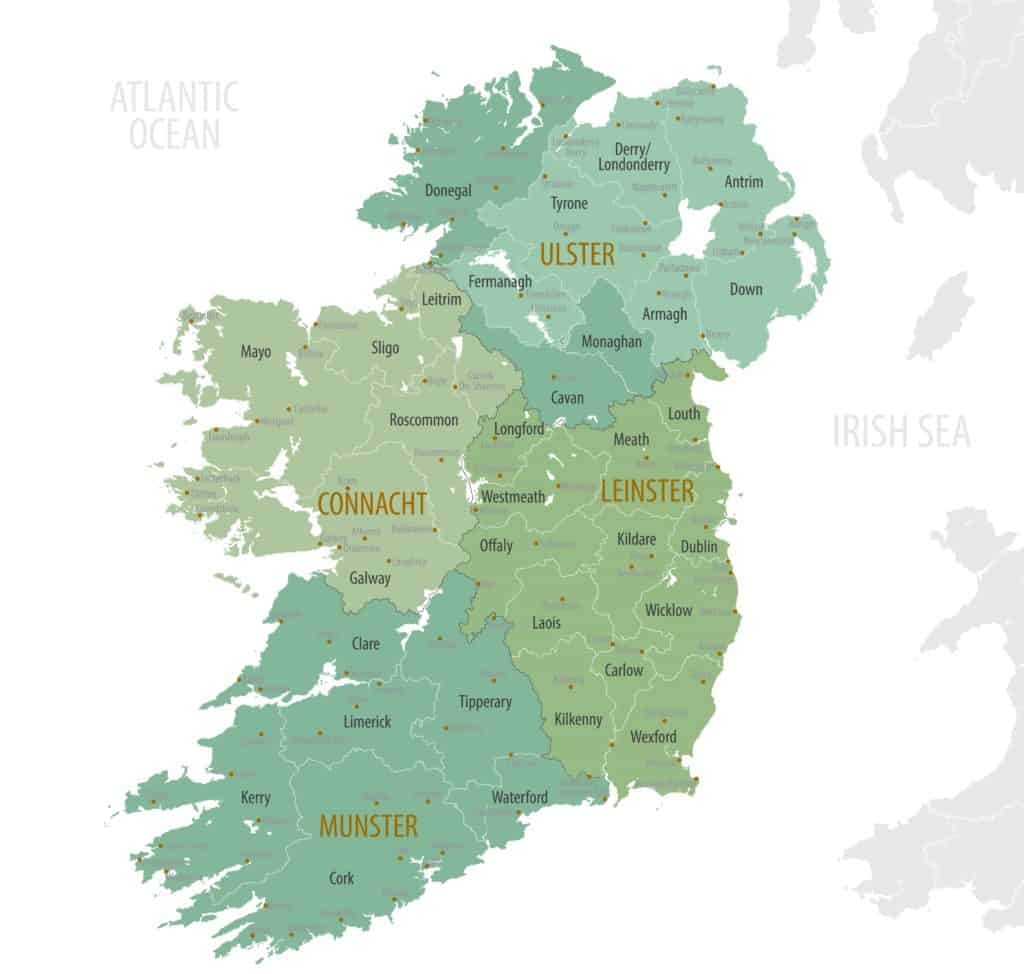
Ogma was the father of Tuireann and Delbaeth, although some tales show that he had three sons, Mac Cuill, Mac Cecht and Mac Gréine. The three sons of Ogma were married to three sisters. Those sisters were Eire, Fotla, and Banba. They had the talent of prophecy and prediction.
When the Tuatha de Danann was heading to Ireland, the land’s name was Innisfail. The three sisters predicted many incidents that took place. So Ogma promised to name the land after one of them, specifically after which sister made the most accurate predictions about the Tuatha de Danann.
Eire was the most accurate in her prophecies. Thus, as soon as the Tuatha de Danann reached the shores of Innisfail, they called it the land of Eire. The English version of the name Eire or Eireann is Ireland, which everyone knows.
The Celtic triple goddesses are seen once again with the prophecy sisters. Some people think that they and the Morrigan, the goddesses of war, are the exact figures under different names due to the shared skills of prophecy. What do you think?
Brigid, the Celtic Goddess of Hearth and Home, Fire and Light
Goddess Brigid was initially known as the goddess of the Sun. Her name differs from one culture to another. According to Celtic mythology, she was born with a flame bursting out of her head.
There is also a claim that she was born during the sunrise. Thus, in many historical and mythological books, you will see pictures of Goddess Brigid with red hair. This portrayal is inspired by sources that claim her as the Celtic Sun Goddess or the Fire Goddess.
Her worshippers believed that her power stemmed from using fires. However, they also considered her the patroness of fertility, arts, agriculture, healing, and prophecy.
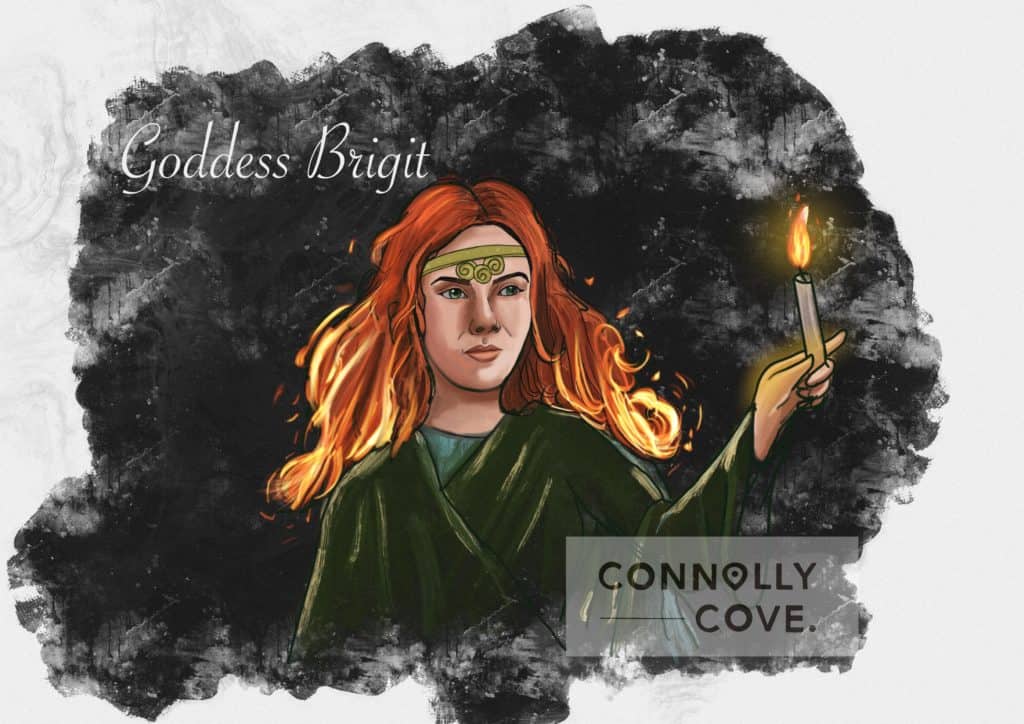
Like many other Celtic Gods and Goddesses, she was famous for having three different figures. Thus, worshippers used to call her the Triple Goddess. They believed that each figure used her fires to symbolically fire up inspiration or ignite the forge and the hearth.
Brigid was married to Bres, the second king and half-Fomorian. She was also considered a triple deity, as there were 3 Brigids in the Tuatha de Danann. Two of Dagda’s sisters and his daughter shared the same name.
This section is about his daughter. The two sisters were Gods of Healing, the Hearth, Childbirth, and Metalsmiths.
Brigid was also considered a Goddess of war, but unlike the Morrigan, she was the goddess of protection, guarding innocent people affected by war. This could be because Brigid’s son died in battle.
Some call her the goddess of the Well due to a story that ties her to a holy well in Kildare and the Goddess of Spring. This makes sense as Imbolc, the festival of Saint Brigit, takes place on 1 February, the beginning of spring.
Brigid’s Family Members of Celtic Gods and Goddesses
Brigid’s father was the Daghda, the druid of the Tuatha De Danann. She had two brothers who were also Celtic Gods and members of the Tuatha de Danann.
One of them was Bodb Derg, who became the king of the Tuaths after they went underground into the side. Her other brother was the Celtic God of love and youth, Oengus mac ind-Og, also known as Angus.
She also had a son, Ruadan, from her Fomorian husband, Bres. Her marriage to one of her family’s enemies put her in an intermediary position between the rivals.
The Tuatha de Danann were the ones to teach Ruadan how to make weapons. However, during the battle, he chose to fight with his paternal side and wound the blacksmith of the Tuaths. It backfired when the blacksmith retaliated, and his power immediately sent Ruadan to the grave.
That was the time Brigid mourned the death of her son. She was the first ever to introduce the keening into Ireland.
What is the “Keening”?
Keening is the act of yelling and crying loudly over the body of the deceased. It was used only by women to express grief and mourn the dead. Before Goddess Brigid’s first keening song, it was deemed unacceptable in Ireland.
The keening was structured into three parts. It started with a salutation, proceeded with a verse, and then the cry occurred. Women also used a manuscript or a song while grieving. Since it is so ancient, it is hard to find any recorded tracks of keening.
Back then, people believed that the keener used her voice to guide the deceased into the other world. In other words, keening aided in travelling through the parallel worlds of the spirits. She made sure the deceased’s soul arrived safely to the next world.
Keening in the Celtic Mythology
In Celtic mythology, the Keening method was usually allied with the most feared creature in Ireland, the Banshee. The name sends some ghastly vibes; it derives from the Irish word “Bean sí” which means the Fairy Dunes. Banshee is a female spirit that people deem as the omen of death.
According to mythology, she has long dark or white hair through which she constantly runs a comb. That is probably why the comb symbol is usually identified with the Banshee. Despite the spooky depiction of her appearance, she could appear as a young, beautiful woman. However, she was more heard than seen.
The relation between the Banshee and the keening is that her spirit roams randomly, especially in the countryside, wailing. She cries out and howls when she is expecting the death of someone nearby. People who were about to die heard her sobbing at night. Loved ones often claimed to have listened to the Banshee, knowing instantly that someone had passed away.
Different Names of Goddess Brigid
Celtic Goddesses and Gods are known to have more than a few names, depending on the variations between cultures. Goddess Brigid is usually written as Brigid, Brigit, or Brighid.
In Irish mythology, she appeared as Brigit. However, she appeared as Bride in Scotland, Brigantia in Northern England, and Brigandu in Brittany. Those various names explain her many titles.
These include Bride the Beautiful, Brigit of the Slim Fairy Folk, and Green Mantle. Some documents describe her as Brigh, meaning the Power, The Fiery Arrow, Lady of the Shores, and Flame of Ireland.
An Irish Goddess with red hair isn’t unusual, but one with hair composed of flames is undoubtedly a spectacle, even in mythology.
The Story Behind the Sacred Well
Goddess Brigid also had powers over elements other than fire, including water. She was famous as the Goddess of Sun and Fire and the Goddess of Water. This fact connected her to most of the wells that produce lively waters for the surrounding trees.
Those wells are known as the “womb of Mother Earth.” Their significance dates back to the pagan era. The most influential well exists near a large tree in Co. Kildare. Worshippers headed there between dusk and dawn, thinking it was when the barriers of the Otherworld were the weakest.
Most of the wells around Ireland are linked to Goddess Brigid because of her connection to the waters. In ancient times, worshippers performed a pilgrimage to Brigid’s wells on the first Sunday in August.
This day is famous for being the Lughnasadh Festival, the Harvest Fair of God Lugh, as we previously mentioned.
The Intertwined Story of the Goddess-Saint Brigid
Throughout Pagan times, Brigid was the goddess of many elements and was worshipped. Eventually, Brigid started appearing as the Catholic Saint of Kildare, as the Celtic Goddess of Hearth slowly faded away.
People were confused by that transformation, finding it hard to connect the missing dots between the two characters. Scholars have finally confirmed that the two mythological characters are the same person.
This is not only because both characters bear the same characteristics and traits but also because of the timing of the transition. By the time Brigid started being described as a Saint and not a Goddess, Christianity had already arrived in Ireland.
When Europe became a Christianized continent, the pantheon of Celtic Gods could not survive. Paganism was no longer accepted, and the worship of the multiple Celtic gods was banned.
Thus, Brigid became the Catholic Saint of Kildare. The mythological side of her transition story states that when Christianity arrived, she was afraid that her followers would abandon her. Therefore, she transformed herself into a saint so that her worshippers would remain followers even after they converted.
The Christian monks realised that she was immensely popular, so instead of trying to erase her from history, they created a Christian version of the figure.
Whether you prefer the mythological idea that the saint was an incarnate of the goddess or simply believe that a religious lady took the name Brigid when becoming a nun, the character has a lot of fascinating mythology.
The Peak of Saint Brigid’s Popularity
Since she was originally a Goddess, Saint Brigid was known for having supernatural powers. She managed to keep her powers despite the transition. That aided in surging her popularity, for her powers were now known as miracles.
She also contributed to the healing of ailed people. Her powers spread her popularity outside the borders of County Kildare in no time. Even today, alongside Saint Patrick, Saint Brigid is a patron Saint of Catholic Ireland.
Despite the disappearance of many Pagan practices, some remained partially intact. This includes the Celtic Festival of Imbolc, a festive day in the Celtic Calendar on 1 February.
Imbolc was a significant event in Paganism since it was all about worshipping the Celtic Goddess Brigid. Coincidentally, it happens to be the same day as St. Brigid’s Feast Day. It was a common practice to hold a Christian feast day on the same day as a pagan festival. In this way, the pagan festivals could be phased out in favour of Christian alternatives.
Superstitions of Spring Cleaning – The Celtic Goddess of Spring
People in ancient times believed that Goddess Brigid walked on the land during the Imbolc season. Thus, they had customs around this belief, including cleaning their houses during spring.
On 1 February, people used to light a fire overnight and leave the door open. They believed that Goddess Brigid would come and bless the home that way. Also, they left a hearth at the door and searched for signs that the goddess had indeed passed by. Right after, they would clean the whole house and light a new fire to welcome the beginning of the new season.
Goddess Brigid Symbols
Numerous Celtic Gods and Goddesses have symbols that they bear a connection to. The Goddess Brigid is no exception. She has several symbols that people usually link to her.
The most famous symbol is the Imbolc Cross, which people make on her holiday. Yet, it is not the only symbol.
Brigid’s Cross
On the festival day of Imbolc, people make small crosses out of rushes and reeds. The cross is tiny, with four arms tied to a little square in the middle. Some people identify it with the Christian cross; however, this tradition goes back to Ireland’s pre-Christian era.
There are two versions regarding the cross’s originality; one is related to the goddess and the other to the saint. According to the Pagans, people made this cross as a tribute to their goddess. They believed it protected the houses from fire when placed around.
The Christian version of the story states the cross was plaited into this form at the deathbed of a pagan lord. There is also another version that claims the dying man was her father.
The story states that when the pagan chieftain was on his last legs, he called for St. Brigid to come over and tell him all she knew about Christ. Brigid arrived at his household, sat beside him, and started knitting the rushes on the floor into a cross.
She used it to explain the meaning of the Christian cross and told him all she knew. He asked her to baptize him before he died.
The Flame and the Water
People use those two symbols to identify Goddess Brigid. After all, she was the goddess of both elements. The fire or the flame signified that Goddess Brigid was born with a fire burning out of her head.
Her depiction usually involves a beautiful woman with shiny red hair. On the other hand, the water signifies the power of healing and divination. It also links to her association with the sacred wells and holy water.
The Tree Symbol
Trees are more often associated with Goddess Brigid for different reasons. One of those reasons was the existence of what was known as Fairy Trees. Those trees are usually found around the holy wells of Kildare and are generally related to the goddess.
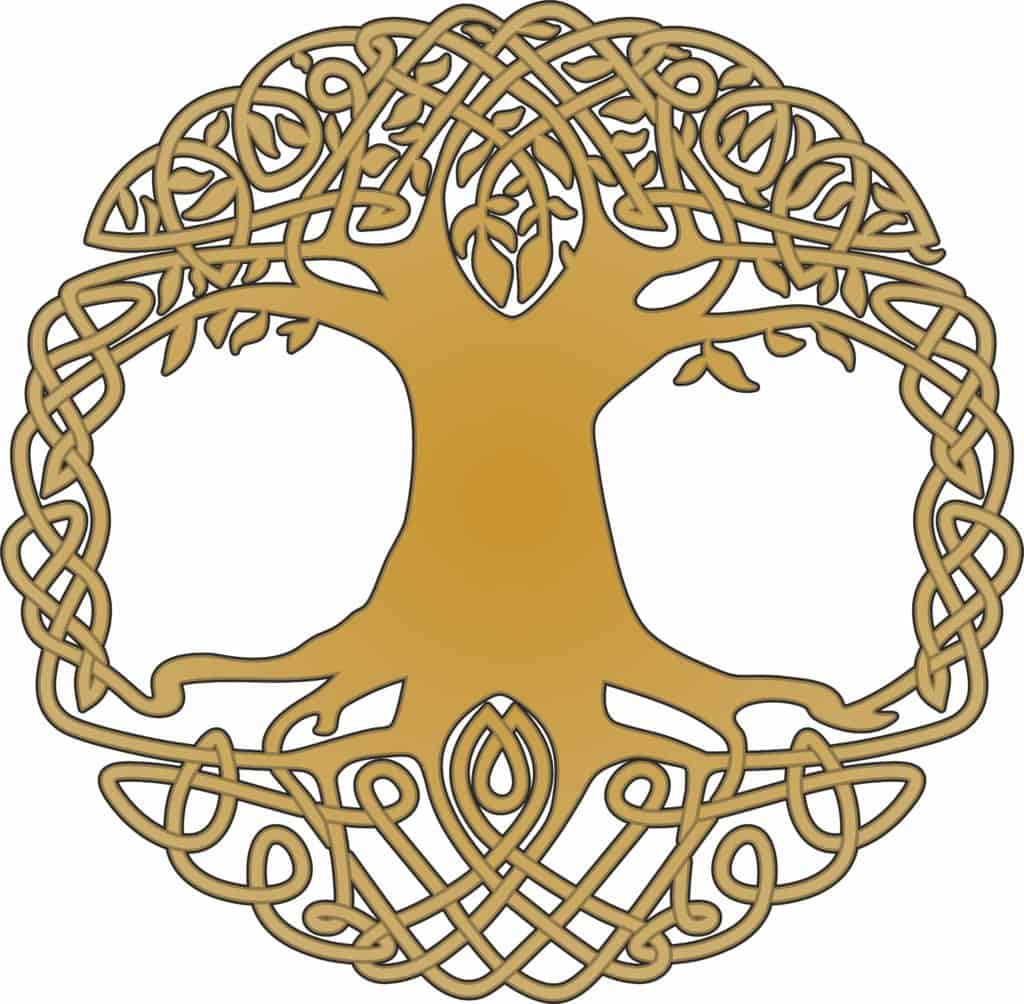
They are also found alone in the middle of a field. This is because when Celts cut down trees to settle in a location, they always left one tree standing, as they believed it was sacred.
Another reason Brigid is associated with the tree is her transition into a saint. She built a small Church under an oak tree in Kildare, which is popular under her name, St. Brigid’s Church of Kildare.
Co. Kildare means ‘Church of the Oak Tree’. If you are interested, we have an article on the meaning of Ireland’s 32 county names!
Saint Brigit’s Magic Cloak
One version of events says that Brigid asked the king for a small plot of land to build a small church for the growing Christian community. In some versions, her father was the king, so that she could make such a request.
Either way, he was a pagan and laughed at Brigid’s idea. He told her he would give as much land as the cloak on her back would cover, clearly a sarcastic way of saying no. Brigit agreed and went out to the field. She and three of her nuns took a corner of the cloak and stepped back. Miraculously, the cloak grew in every direction, covering acres of land.
You might think the king would have been annoyed, but instead, he believed he had witnessed a miracle and asked to be baptised alongside everyone who watched and mocked. This is a Christian version of the story, but it is interesting nonetheless.
It is interesting that Brigid is one of the most potent Goddesses but is never depicted as someone who uses their power for evil or selfish motivations; she only wants to help the people of Ireland. There are no tales of war or revenge involving her, which presumably is a reason why the monks preserved her alone.
Whether the Celtic Pagan Goddess and the Catholic Saint are the same isn’t essential, as they significantly influence Irish culture.
Aengus Óg the Celtic God of Love, Youth and Beauty
Angus is the God of Love and Beauty. His parents belonged to the Celtic Gods and goddesses. He is the son of Boann, the River Goddess, and the Daghda, the Father God.
People also regard Angus as the god of youth, for he was young and good-looking. Besides, the meaning of his name translates into “True Vigor” or “Real Energy”. It signifies his identification with youthfulness and the robustness associated with that time of one’s life.
Most of the Celtic gods’ birth stories are pretty weird. Yet, this one remains the oddest of them all. Legends claim that Angus Og was born in only one day, a miracle even rarer in Celtic mythology!
The story starts with the forbidden affair between the Daghda and Bionn, the River Goddess. Their union resulted in Boann becoming pregnant with Angus. They had to cover up their affair. Thus, the Daghda decided to take charge of the issue.
As the leader of the Celtic Gods, he had the power to control the weather and time. Consequently, he used his powers to make the sun remain for nine months. The night never came through those months. According to people, Angus was born in a single day with four birds tweeting over his head. Dagda effectively stopped time to ensure his affair was undetected.
The Story of Angus in the Celtic Mythology
Angus was a famous Celtic God in Celtic mythology, especially in Ireland. One story claims that he tricked his father into taking over Bru na Boinne, the spiritual residence of the ruler of the Tuatha de Danann.
The Dagda was generous to all the children, giving them gifts and magical treasures, all of his children except Aengus, whom the Dagda did not want to draw attention to due to the affair. Aengus got his ‘gift’ from his father by taking over his home!
The Claddagh Ring is another Irish symbol of love, loyalty and friendship. While not associated with the Celts, as it was created in the 1700s, the ring has become a symbol of Irish culture, with many of the ring bands incorporating a Celtic design.
The Patron of Young Lovers
In ancient Ireland, people gave Aengus the status of being the patron of young lovers. He managed to earn this status by loving a maiden he saw in his dreams. That girl was Caer Ibormeith; he fell in love with her before they met.
Thus, he fell sick and was desperate to find her. His mother wanted to help, so she looked for the girl around Ireland. However, seeing her was not easy, so she turned to her husband for help. Unfortunately, the Daghda himself had no idea how to help. He had to call in assistance in the form of Bov the Red or Bodb Derg, a brother of Aengus.
The latter was the king of the Dananns of Munster. He was famous for being the master of secrecies and mysteries. He searched for a whole year. After that, he proclaimed that he had found the girl at the Lake of the Dragon’s Mouth. There was a problem, however: she was a swan. Angus dashed to Bov and asked to take him to the lakeshore.
Upon arriving there, he found a significant number of swans, all of them walking in pairs. A chain of gold linked every pair together; however, there was only one. She was the tallest and most eye-catching.
The Celtic God, Aengus, asked the swan keeper what had happened to the girl. Eventually, he admitted that the swan was his daughter. He had transformed her into a swan because she was more powerful than him, and he didn’t want her to leave, adamantly refusing to transform her back.
So, Angus transformed into a swan, and they flew away together. To this day, people have regarded swans as a symbol of love and eternity in Celtic myth. Swans have been significant in Celtic mythology in many stories, including Children of Lir.
Three Celtic Gods of Craft
The Three Celtic Gods of craft that created all of the tools and weapons for the Tuatha de Danann were as follows:
- Goibnu – Metalsmith
- Creidne – Goldsmith
- Luchta – Carpentry
The three men were each masters of their craft and aided the Tuatha de Danann in many stories. They were three brothers. Danu was their mother, and Tuirenn (or Delbáeth) was their father.
Celtic Gods of Healing
The Tuatha de Danann had many healers, but they did not always have the tribe’s best interest at heart…
Dian Cecht – The Healer God
Dian Cecht was the physician and healer God of the tribe. He was the greatest healer of his time and had never failed to heal a severely injured member.
According to mythology, his healing methods involved water, such as cleansing and submerging people in wells. When they emerged, their wounds were healed, and in some cases, he resurrected people in the lake.
The well Dian Cecht used is called the Well of Health, Slane, or Sláinté in old Irish. Sláinté is the modern word for ‘health’ and is often said instead of cheers when toasting a drink in pubs in Ireland.
It was Dian Cecht who replaced Midir’s eye. However, there was one case he simply could not figure out: how to create a new lifelike arm for King Nuada. The silver arm was the best he could do.
Dian Cecht had two children who inherited his healing ability, Miach and Airmed.
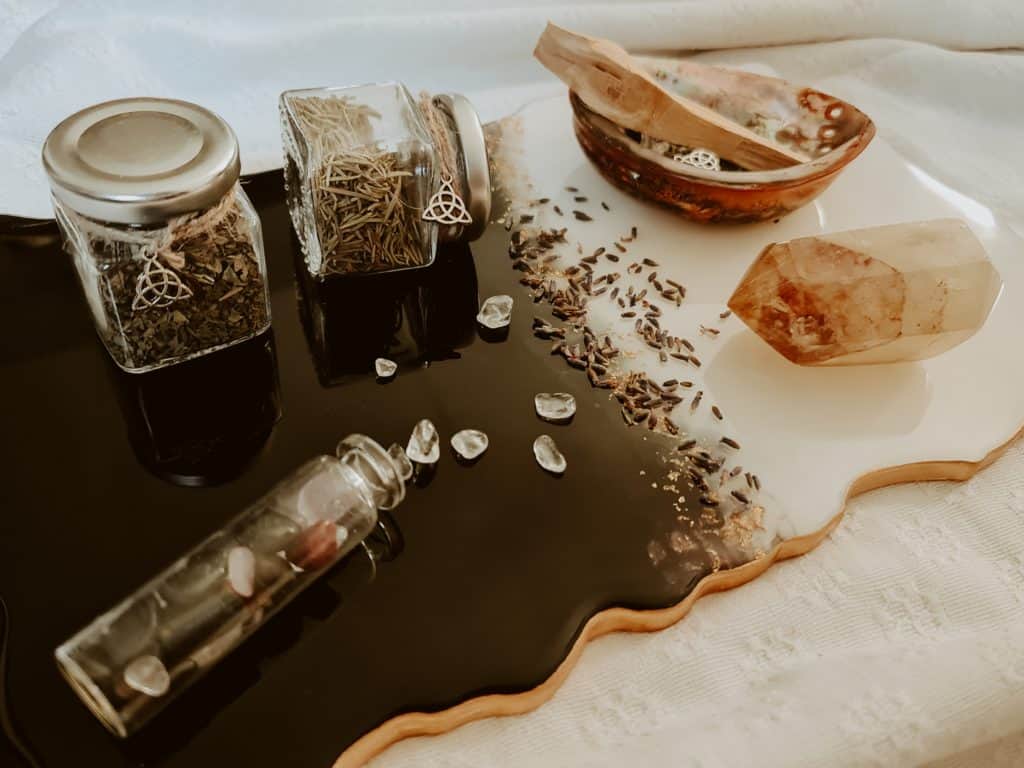
Miach
Miach was very unlike his father. He did not charge for his services and preferred to use herbs and prayers over water. When Dian could not heal Nuada, Miach tried to figure out the problem and was able to craft an arm that looked as though it was real.
Dian’s jealousy and fear of no longer being superior drove him to kill his son.
Airmed
Airmed also had healing powers, but didn’t know how to use them. When she found out her brother had died, she cried for days. Her tears contained lots of magical herbs, and when she noticed this, she collected them.
They had properties equal to Dians well, so Airmend went about labelling them and figuring out how to replicate them to cure as many people as possible. There may have even been a way to revive her brother…
One day, Airmed returned home to find all her herbs had been destroyed. She had no way of replicating them and was heartbroken that she could not help people anymore. Dian destroyed the herbs, proving once again that he only wanted to help people so he could be paid and feel superior.
Celtic Gods of the Sea and the Water
Cliodna / Clíodhna – Irish Goddess of the Sea?
Clíodhna is the goddess of love and beauty and the Queen of the Banshees. In other stories, she hails from the otherworld, which is thought to be Tír na nÓg (the land of the young). She is associated with the sea as Manann mac Lir tried to drown her, but in most stories, she survives.
The fact that she survives the phantom of the Celtic Sea God hints that she has some power over the sea and the water itself.
Her stories are usually tales of tragic romance. In particular, one involves her falling in love with a married mortal, a man named Ciabhán, which results in Manann trying to kill her.
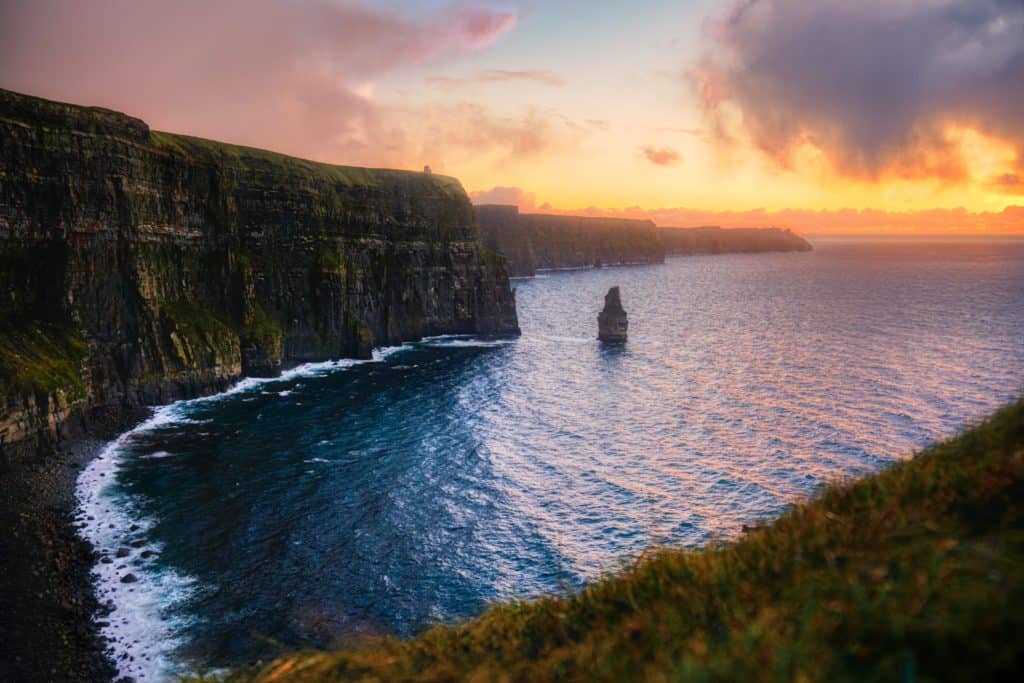
Clíodhna is associated with the folklore of the Blarney Stone. The builder of Blarney Castle asked for her help as he had to represent himself in a court case. She told him to kiss the first stone he saw. He did and managed to represent himself eloquently in court, having received the ‘gift of the gab’.
This stone was incorporated into the castle to give anyone who kissed it the gift.
While a goddess of the sea may be a stretch on our part, Clídna is credited with being the Queen of the banshees, which is very interesting.
Manann mac Lir – Irish God of Sea
The Celtic God of the sea and warrior king of the Otherworld in mythology is Manann mac Lír. The Otherworld is believed to be Tír na nÓg or the land of the young. It is a mystical land and challenging to reach. One of the possible ways is by travelling over the seas.
Manann mac Lír cloaks the country using a mist of invisibility so only those invited can enter. Manann’s daughter Niamh Cinn Ór, or Niamh of the golden hair, is the princess of Tír na nÓg and is a main character in arguably the most famous myth of Irish folklore, ‘Oisín in Tir na nÓg‘.
Niamh Cinn ór – Tir na nÓg
Niamh is considered half Tuatha de Danann, as her mother is not mentioned in the tales. She arrives in Ireland on a white horse and proposes to Oisín, the son of Finn McCool and leader of the famous Fianna tribe. This story is part of the Fenian cycle of Irish mythology.
We don’t know much about Niamh as she is intentionally mysterious. We see that the land she lived in was where no one ever aged or died, and as long as you stayed on her horse, you could travel the world without ageing.
People from the Otherworld visited Ireland, but it was rare for someone from Ireland to be allowed to reach the Otherworld.
If you stepped foot on foreign soil other than Tir na nÓg’s, your years spent ageless in the Otherworld would catch up to you. Unfortunately, Oisín found himself in this fatal situation… You can read about the story of Tir na nÓg and more tales on our blog about Irish mythological stories.
Boann – Celtic Goddess of the River Boyne
Boann can be credited as the Celtic goddess of music and rivers.
The River Boyne is a momentous river in Ireland found in the Provence of Leinster. According to Irish mythology, Boann was the Irish goddess of that river, the River Boyne. She was a member of the Tuatha de Danann.
Her father was Delbaeth, another member of the Tuatha de Danann, and her sister was Befind. In Old Irish, her name was written as Boand, which was later changed to Boaan and Bionn. Boann was Elcmar’s wife; however, she had an affair with the Dagda. Their affair resulted in the conception of their son, Aengus, the Celtic God of love and youth.
The Creation of the River
At some point, the River Boyne did not exist or was unknown to the people. Stories about its creation evolved once it became a prominent river in Ireland. The creation of the river has always been associated with Goddess Boann.
So, it is easy to speculate why she was the goddess of this river. The story of how Boann created the river has always had two versions.
The tale of Dindsenchas illustrated one of the versions. This version narrates the story of the magical Well of Segais, which some call Connla’s Well. Around the well were many scattered hazels. Boann’s husband in that story was Nechtan, who prohibited her from going near that well.
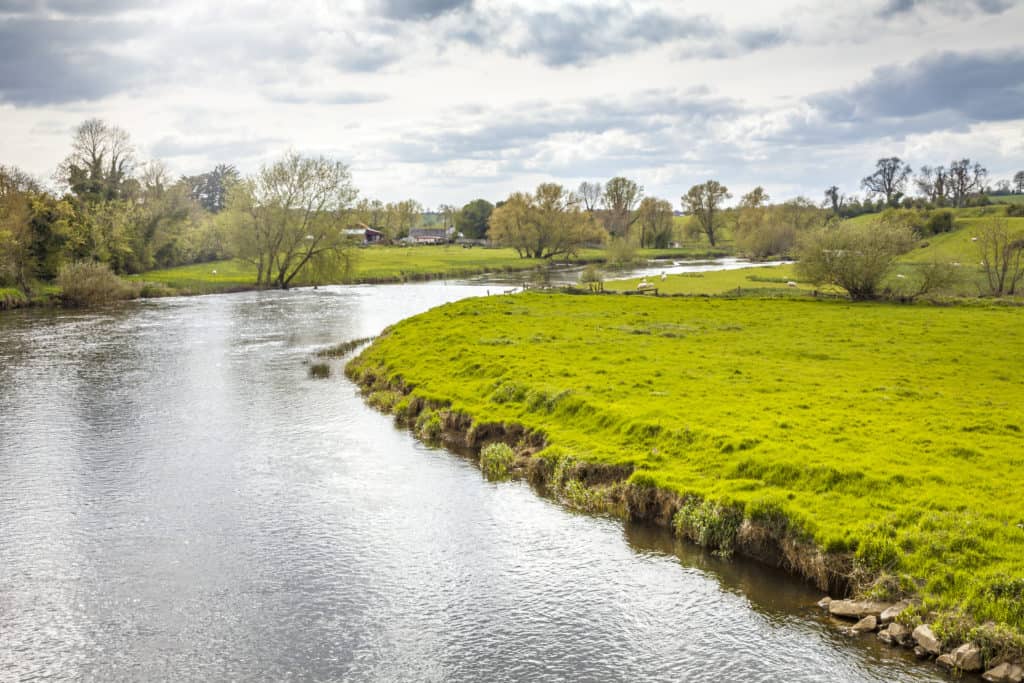
The hazelnuts fell into the well, and the salmon ate them. Maybe this was how the salmon of knowledge that gave Finn McCool infinite wisdom was created. That’s just a guess on our part, however!
Boann ignored her husband’s orders and kept walking around the well. Her circular motions stimulated the waters of the well to upwell fiercely. When the water surged up, it rushed down, forming a sea. That was how River Boyne came to life. During that process, goddess Boann lost an arm, eye, and leg due to the coursing flood. Eventually, she lost her life as well.
The Second Version of the Creation of River Boyne
Well, the difference between the two versions is very slight. The difference lies in the fact that Goddess Boann didn’t die tragically. Different sources claim Boann went to the Well of Segais, a source of wisdom and knowledge.
Like the other version of the story, Boann kept walking around the well. Her counter-clockwise spin caused the water to flush out of the well violently and throw her into the sea.
When Boann dashed into the sea, she changed into a salmon, like the ones that lived in the well. Becoming a salmon made her the goddess of the new river and the salmon of wisdom. Celtic people called her the mother of the river.
She was the mother of the Boyne River, one of the most important rivers worldwide. Interestingly, salmon is mentioned in both versions, as the ‘Salmon of Knowledge’ is a very well-known story in Irish mythology.
Boann’s Role In the Irish Mythology
Boann was the goddess of the River Boyne and had many roles in the Celtic tales. She was once the protector and maternal aunt of the mortal Fráech. This took place in the story of Táin Bó Fraích.
According to many tales in Celtic mythology, Boann had many husbands. No one is sure who the real one was, for it varied from one tale to another. In one story, Boann’s husband was the mortal Elemar; in others, he was Nechtan, the God of water.
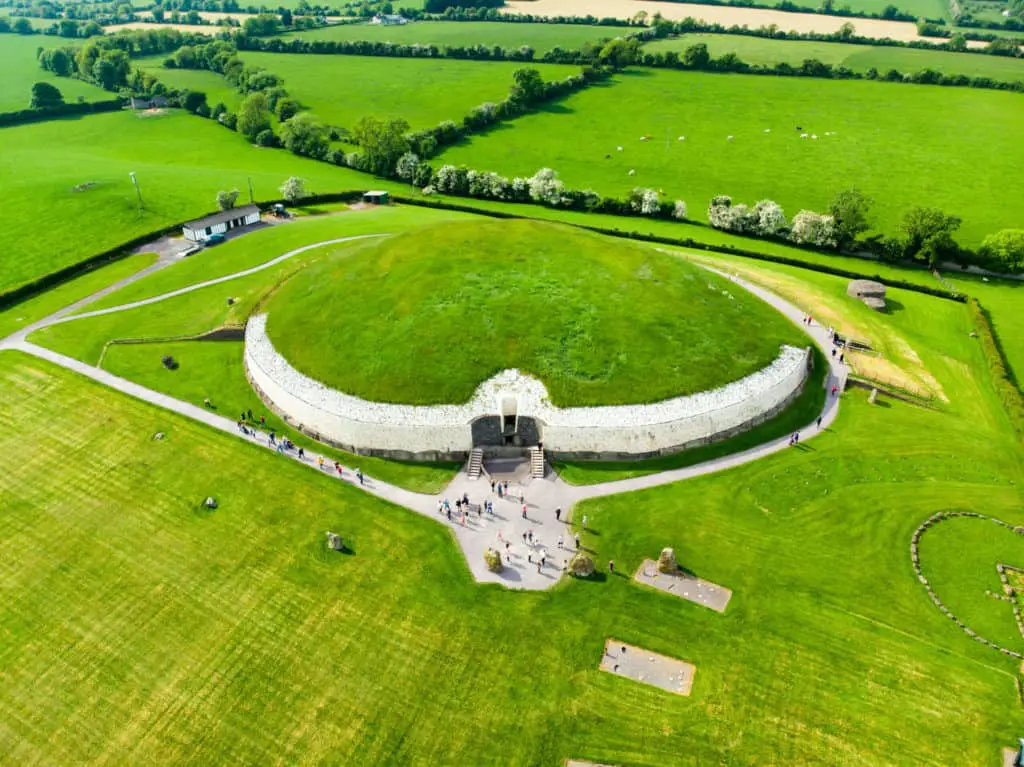
Analysts speculate that Nechtan might have been the Dagda, leader of the Tuatha de Danann. They believe that both characters are the same person. However, a tale contradicts their speculation.
A Celtic tale claimed that Boann had an affair with the Dagda while her husband was away. In this story, Elcmar is her husband. She got pregnant, and the Dagda had to stop the time to conceal her pregnancy. It was the tale of when Aengus, the God of love and youth, was born.
Boann and the Birth of Music
The Dagda, leader of the Tuatha de Danann, once had a harpist, Uaithne. In one tale, he was the husband of Boann. The Celtic god Boann is attributed to the birth of the music’s stains. The three types, in particular, are sleep, joy, and weeping. Boann and Uaithne had three children together. With the birth of each child, Boann introduced one stain of music.
When they had their first son, Uthaine played the healing music while Boann cried out. That was supposedly the first introduction of lamentation music to the world. The music of joy came to life with the birth of the second child, for Boann was crying in pleasure.
She was in pain, yet she was happy for the arrival of her second baby. Boann’s third delivery seemed so easy that she slept while Uthaine played music.
Dagda used these three types of music to escape from the Fomorians when he stole back his harp, an excellent reference to the pair’s relationship. Their child, the God of love, symbolizes their affection.
More of Boann’s Contribution to the Celtic Mythology
Boann lived in Bru na Bóinne, a popular destination for spiritual travellers. The site was full of chambers where guests resided; interestingly, some chambers were meant only for the Fairy folk.
At this site, there were three fruit trees, which provided fruits all year round. Sources claim these trees produced hazelnuts, while others believe they were apple trees. However, the theory of the hazelnuts makes more sense because Boann’s story mentioned the hazelnuts that fell in the well.
Visitors performed spiritual rituals at those trees and connected with their inner souls. Boann had a unique role at the site; she assisted visitors with connecting with their spiritual side. For that reason, people refer to her as the goddess of inspiration and the goddess of the river.
The mythology claims Boann could clear your mind and banish negativity with her powers. She was also the goddess of poetry, writing, and music. These traits were shared with many other Celtic Gods of the tribe, so much so that it was seen as a given that one would innately possess these abilities. The Celtic Goddess of Water and Rivers was essential to many stories.
Lir – A Celtic God of the Sea
Lir was the son of Midir and the father of the four children of Lir, who were cursed to be swans for 900 years. Lir remained loyal to his children, who had moved out of his castle and lived at the lake where the swans were cursed to stay for 300 years with his father, Midir. This is another reason swans symbolise love and loyalty in Irish mythology.
Other Celtic Gods and Goddesses include:
Ernmas – Celtic Mother Goddess
Ernmas is credited with being the Mother Goddess of Ireland. Many trios of Gods and Goddesses, including the Morrigan and the Prophecy sisters, for whom Ireland was named.
As you can see from reading this article, there are many triple Gods and Goddesses in Irish mythology. Influential trios feature in most mythologies and religions in some shape or form. Can you think of any examples?
Midir the Proud
Midir the Proud was another son of the Dagda and the father of Lir, of the Children of Lir, and foster father of Aengus. Midir features in stories such as The Wooing of Étain and The Children of Lir.
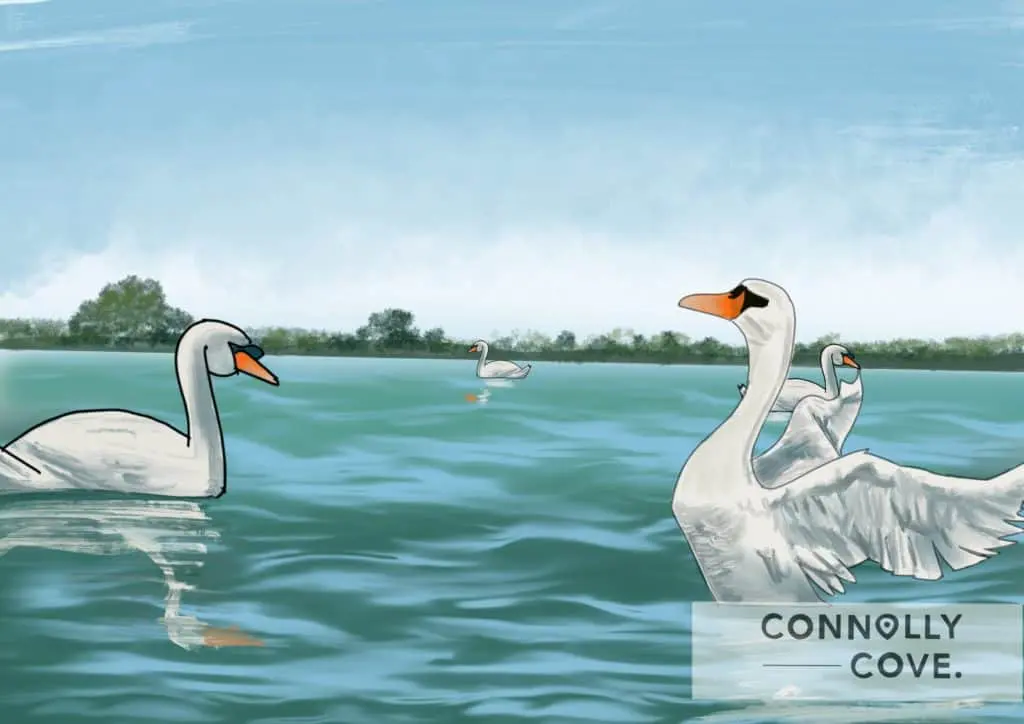
Fand
Fand is another worldly woman appearing in The Sickbed of Cú Chulainn as a sea bird, flying alongside enchanted birds. Fand and Cú Chulainn have a tumultuous relationship, ranging from love to war and turmoil, but they eventually separate peacefully and return to their former partners.
Celtic Gods and Goddesses of Fire
As one of the four elements, Irish mythology focuses on Celtic gods and goddesses of fire. These mythological tales were typically centred around the sun, warmth and light. Check them out below:
Celtic God Belenus
Belenus is a Celtic God associated with the sun, light, healing, and fertility. Ancient Gauls and Britons worshipped him, and his cult spread throughout Celtic lands. Belenus is often depicted as a youthful, radiant figure symbolizing the sun’s warmth, light, and life-giving properties.
Belenus is often linked to healing and was revered as a deity who can bring about physical and spiritual well-being. His association with healing suggests that he was believed to have the power to restore health and vitality. He was associated with thermal springs and sanctuaries renowned for their healing properties in some areas.
Fertility and abundance
In addition to his solar and healing attributes, Belenus is associated with fertility and abundance. His worship was connected to agricultural cycles and the bountiful harvests that depended on the sun’s warmth and light. Belenus was often invoked for blessings on crops, livestock, and the fertility of the land.
The worship of Belenus was significant in Celtic religious practices, and his cult sites were often located in natural landscapes, such as hilltops, groves, and springs. Festivals and celebrations dedicated to Belenus were held, typically during the summer solstice, honouring the peak of the sun’s power and the abundance of the growing season.
Meaning of the name Belenus
As a solar deity, Belenus represents the power of the sun and its transformative energy. His name is derived from the Celtic root *Belen, which means “shining” or “brilliant.” He is associated with the sun’s light and the seasons’ cycles, embodying nature’s life-giving and regenerative forces.
It’s important to note that much of our knowledge about Belenus comes from inscriptions, references in ancient texts, and archaeological findings. Due to the limited surviving sources and regional variations in Celtic mythology, some aspects of Belenus’s character and worship may have varied among different Celtic tribes and regions.
Overall, Belenus is a significant figure in Celtic mythology. He embodies the sun’s radiant power, healing energies, and the abundance of the natural world. His worship reflects the deep connection between the Celts and the forces of nature, their reverence for life cycles, and the importance of light, fire, and fertility.
Celtic Goddess Áine
Áine is a prominent goddess in Irish mythology, associated with the sun, summer, sovereignty, fertility, and abundance. She is considered one of the Tuatha Dé Danann, a divine race in Irish mythology.
As a solar goddess, Áine embodies the life-giving and nurturing qualities of the sun. She is closely associated with the summer solstice, which marks the longest day of the year and the height of the sun’s power. Áine is considered a goddess of sovereignty, symbolizing the abundance and prosperity of the land.
Depictions of Áine
Áine’s influence extends beyond the realm of nature and fertility. She is often depicted as a beautiful and radiant goddess, embodying love, sensuality, and feminine power. Her association with sovereignty suggests her role in governing and protecting the land, ensuring its well-being and prosperity.
In addition to her solar and sovereignty aspects, Áine is associated with healing and the medicinal properties of plants. She is believed to possess excellent knowledge of herbalism and can bring healing and well-being. She is often invoked for blessings on crops, livestock, and the health of individuals.
Legends and folklore also often depict Áine as a figure with a naughty side. She is said to be able to shape-shift into a red mare, particularly on Midsummer’s Eve, and would join in the festivities and races held in her honour. It is believed that offering gifts to Áine and respecting her sacred places ensured her favour and blessings.
Meaning of the Celtic God name Áine
Áine’s name is believed to be derived from the Old Celtic word áine, meaning “brightness” or “radiance,” which reflects her association with the sun’s warmth and light.
Although Áine is primarily associated with Irish mythology, variations of her name and similar goddesses exist in other Celtic cultures. Her prominence in Irish folklore reflects the significance of the sun, summer, fertility, and sovereignty in Celtic spirituality. This highlights the interconnectedness between nature, the divine, and human life.
Áine is connected to various sacred sites in Ireland, with County Limerick being particularly associated with her worship. The hill of Knockainey is believed to be one of her sacred sites, where she was honoured with rituals and festivities during the summer solstice.
Cailleach, the Celtic Goddess of Winter
Cailleach is a Celtic Goddess found in Irish and Scottish mythology. She is popular among Gaelic cultures but has different names depending on region. Wherever she appears, her identity is all about winter.
According to mythology, Cailleach is a destroyer goddess and a storm bringer. She appears in the late days of Autumn to prepare for the arrival of winter.
People called her the Dark Mother of Winter and, sometimes, the hag. Unlike most Celtic gods and goddesses, the Cailleach’s depiction is neither awe-inspiring nor beautiful. She usually appears as a single-eyed older woman with terrible teeth and knotted hair.
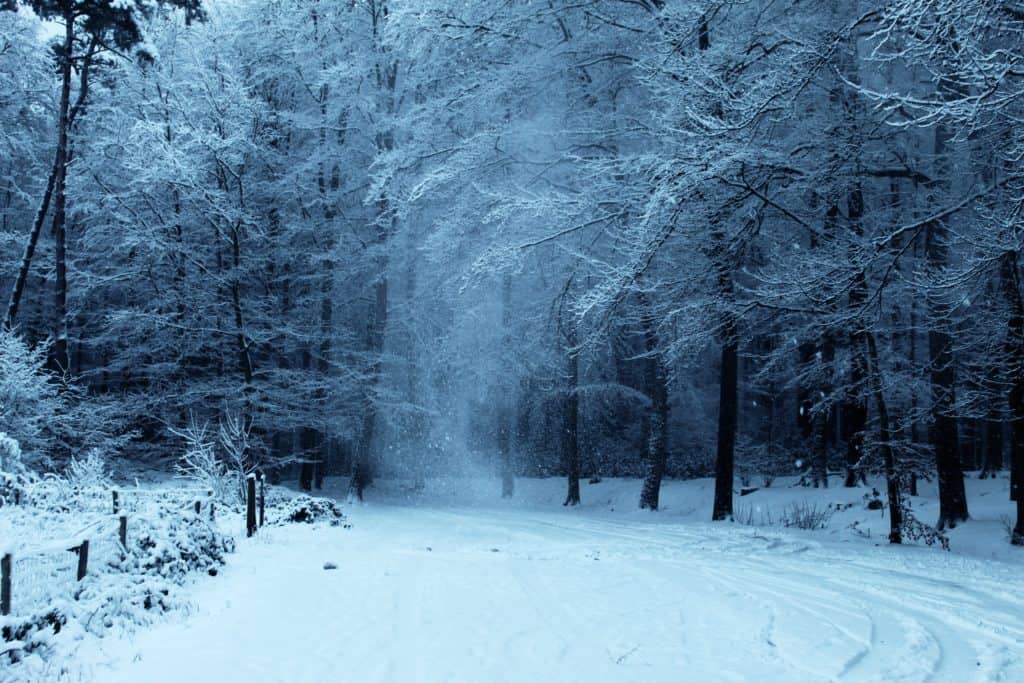
The Meaning of the Name Cailleach
The translation of the word “Cailleach” is “The Veiled One” in English. This makes sense since the visual depiction of these figures comes as an older woman covering her matted hair. However, she has other names depending on the folklore in which she appears.
She’s popularly known as Beira in Scottish Folklore, but her different name doesn’t change her identity as the winter Goddess.
What Irish Folklore and Legend Say about Cailleach?
Gaelic mythology claims that Cailleach ages backwards each year, starting as a spooky-looking older woman until she becomes young and beautiful.
One reason she’s associated with the darkness of winter in Ireland is that she is usually born old on Samhain. For this reason, she and the Morrigan, a goddess of death, are the god most associated with Samhain.
She keeps getting younger until she becomes a fine-looking maiden by the arrival of the Bealtaine festival season. The Bealtaine festival is on 1 May and signifies the return of Light.
One story claims that her transformation happens when she, as an unsightly older woman, meets a hero. He treats her kindly despite her gruesome appearance. Thus, she turns into a beautiful woman as a reward for him. Other stories feature her as an older woman who turns into a grey stone until Beltane.
The colour blue usually symbolises Cailleach. According to Irish myth, she has one blue eye and, in Scottish legends, a blue face. Not only does the blue colour identify her, but it also signifies the cruelty of the winter breeze.
Moreover, she is famous for having many foster children throughout her lifetime. The Irish believe that her grandchildren and great-grandchildren formed the tribes of their County Kerry.
Beira of the Scots
In Scotland, people sometimes refer to the Goddess of Winter as Beira. They believe she is the counterpart of the summer months’ queen, Brigid, the Celtic Goddess of Fire and Light. Like the Irish folklore, Cailleach is a destroyer and a fearful goddess.
But there is more to Cailleach than it may seem. She was also a creator and animal protector. More aspects connect her to the natural world than death and winter, including being the goddess of the Grain Harvest.
Some tales also claim her as the guardian of the life force as she nourishes every seed beneath the earth. She’s the one who brings the seeds to life during spring despite being the goddess of the year’s dark half. Those aspects put her under the title of Goddess of Death and Resurrection.
Scottish Goddesses such as Beira and Brigid are versions of the same Celtic Goddess in different mythology. Are there any interesting Scottish deities we have left out? Let us know in the comments below!
Cernunnos, the Celtic God of the Forest
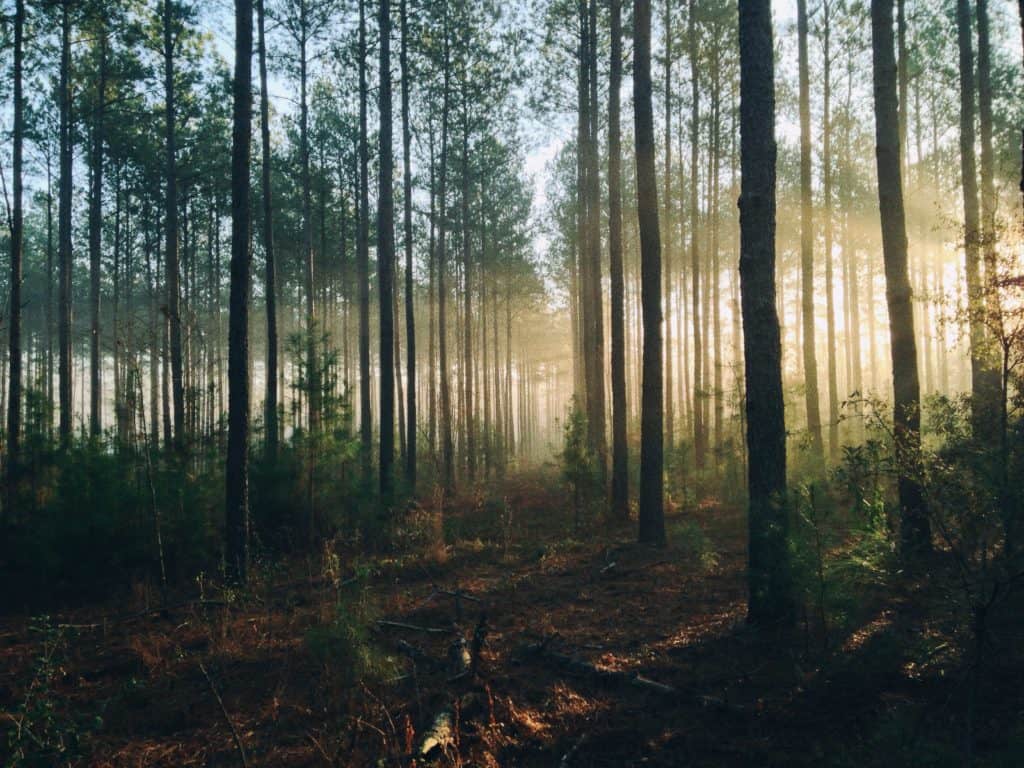
Among the many Celtic Gods, Cernunnos of the Forest appears numerous times in Celtic mythology. He is usually associated with animals, fertility, and vegetation. Cernunnos has mighty antlers, wild hair, and a beard. This Celtic horned God was famous in many parts of Western Europe and the British Isles.
His portrayal with antlers fittingly makes him the Master of the Hunt and the Protector of the Forest. In all cases, Cernunnos is also the Celtic Tree God.
Cernunnos is both a protector of animals and the God of the hunt. So long as people don’t kill more prey than they need to survive, he would not interfere with their hunt. He is a Celtic nature God that protects all lives in some form.
The Meaning of the Name
In the Celtic language, the translation of Cernunnos into English means “Horned”.
Identifying Cernunnos with the Green Man of the Irish Celtic Mythology
For so many years, legends have been telling the infamous tale of the Green Man, who showed up in numerous forms throughout history.
However, the face remains the only constant among all the depictions. Legend has it that the Green Man’s face had a plantation covering it that also bulged out of his mouth. People back then regarded him as a natural spirit that showed up in a human form.
The Green Man was famous in the Roman Empire and even reached some parts of the Asian continent. However, its peak of high status lay among Celtic cultures and other European societies such as France and Britain. Its images are found in many of these specific regions.
The Relation between the Green Man and the Celtic Gods
Usually, gods in different cultures can be compared and identified with the entity of the Green Man. The deity differs from one culture to another. Among the Celtic Gods, Cernunnos is depicted as the Green Man.
The reason that links between the Green Man and the Irish Celtic Gods is the connection with nature. The Green Man entity and God Cernunnos are related to the forest and its greenery. The Green Man has the face of a middle-aged man and a body utterly covered in trees. Random flowers and leaves also surrounded his face.
Such portrayals have left the Green Man seen as a symbol of growth and rebirth, depicting man’s life cycle. Those beliefs go back to a pagan notion that states humans were born from nature, hence the depiction of Cernunnos.
The downside of such a portrayal is the misinterpretation of the horns as a symbol of the devil. With the arrival of Christianity, most of the churches started carving images of Satan as an entity with horns.
The horns resembled those of Cernunnos, the Green Man. Thus, priests and saints referred to the Pagan followers of Cernunnos as “devil worshippers.” This shows that while some Celtic Gods were positively preserved, others were vilified.
Celtic Symbols of God Cernunnos
The Green Man’s main symbols are the horns and torcs of Cernunnos, each with significance.
The Massive Horns of Cernunnos
The first thing you notice while observing images of Cernunnos is his horns.
According to the Celts, the horns signify dominance and male power. Their presence is quite enthralling and adds uniqueness to the appearance of this deity among all the Celtic Gods.
The Hanging Torcs
Cernunnos is often seen with torches hanging down from his horns. Torcs are ancient pieces of jewellery used to elaborate one’s status. Those with more lavish jewelry held higher ranks within their clans.
The purpose of the torcs was to symbolise his high status and power. You can see torcs in the National Museum of Ireland in Dublin.
Would you like us to list deities and their symbols in Celtic Mythology?
Mythical Heroes and Other Characters
Other Celtic Gods who we haven’t mentioned are Abcán, a dwarf poet and musician; Ecne God of wisdom and Knowledge, Áine a summer goddess; Bébinn goddess of birth and sister of Boann; Canola, goddess of music and inventor of the harp; and Flidas, the goddess of cattle and fertility,
Heroes include Cu Chulainn, son of Lugh and fierce warrior, and Deidre of the sorrows, the tragic heroine of Irish mythos.
Other important figures include Queen Maeve, who has connections to Macha; Scátach, the trainer of Cú Chulainn; and Étaín, who is turned into a butterfly by a jealous Fumanach.
These are only a few magical druids, fierce warriors, tragic figures and nefarious villains.
Rhiannon – God of the Moon
Irish Mythology Creatures
Irish mythology is rich with fascinating creatures and beings. Here are some notable creatures from Irish mythology:
- Banshee: A female spirit known for her wailing cries. Banshees are believed to appear before the death of a person, particularly of Irish descent, and their cries are said to foretell the impending demise.
- Leprechaun: Perhaps one of the most famous Irish mythological creatures, leprechauns are tiny, mischievous beings associated with Irish folklore. They are depicted as little older men who often wear green clothing and are known for their love of gold and ability to grant wishes.
- Púca: The Púca is a shapeshifting creature that can take various forms, including that of a horse, goat, or even a human. It is known for its mischievous nature, often leading travellers astray or playing pranks on unsuspecting individuals.
- Selkie: Selkies are mythical beings capable of transforming between a seal and a human form. In their human form, they are often described as outstanding individuals. Selkie stories usually involve tales of love and loss, as they are said to be able to shed their seal skins to become human but must eventually return to the sea.
- Dullahan: The Dullahan is a headless horseman figure from Irish folklore. It is said to carry its head under its arm, and when it stops riding, a person will die. The Dullahan is associated with death and is often seen as an omen of impending doom.
- Changeling: In Irish folklore, a changeling is a creature left in place of a human child taken by the fairies or “the Good People.” The changeling appears identical to the human child but is often sickly or devious. It is believed that fairies can be tricked into returning human children by using various methods, such as fire or holy rituals.
These are just a few examples of the many fascinating creatures found in Irish mythology. The mythology of Ireland is vast and diverse, and exploring it further will reveal even more captivating beings and stories.
Celtic Mythology Dragons
Dragons are powerful creatures in Celtic mythology, although they differ quite a bit from the fire-breathing monsters that people often imagine when they think of dragons. Celtic dragons are seen as a symbol of power and wisdom among leaders. They are also considered the gatekeepers to other worlds and symbolise power and wealth.
Water Dragons
Water dragons are a common symbol in Celtic mythology. These creatures are associated with water and the power of the sea, with some stories portraying them as benevolent and others describing them as evil.
The Red Dragon and The White Dragon
One of the most famous Celtic dragon legends is from Welsh mythology, the story of the red dragon (Ddraig Goch) and the white dragon (Ddraig Wen). This story tells of a fierce and destructive battle between these dragons, causing chaos. The red dragon represented the Welsh, and the white dragon the English. The story is prophetic, suggesting the eventual victory of the Welsh over the English.
Dragon Symbols
The dragon symbolises the power of the Earth itself, a connection seen in the ancient Celtic practice of “ley lines”. The ancient Celts believed these lines in the landscape were lines of energy.
The points where these lines intersected were believed to be powerful places of healing or spirituality. Many of these points were marked by stone circles or other landmarks, and some believe these were often in the shape of a serpentine dragon to represent the power of the Earth.
This might be where Celtic mythology derived the idea of dragons as symbols of power and the Earth itself.
Serpent Dragons
Celtic dragons in Irish Mythology were often portrayed more like serpents than the lizard-like creatures seen in other cultures’ myths. In Celtic artwork, they were typically drawn in a serpentine form and were often associated with water and nature.
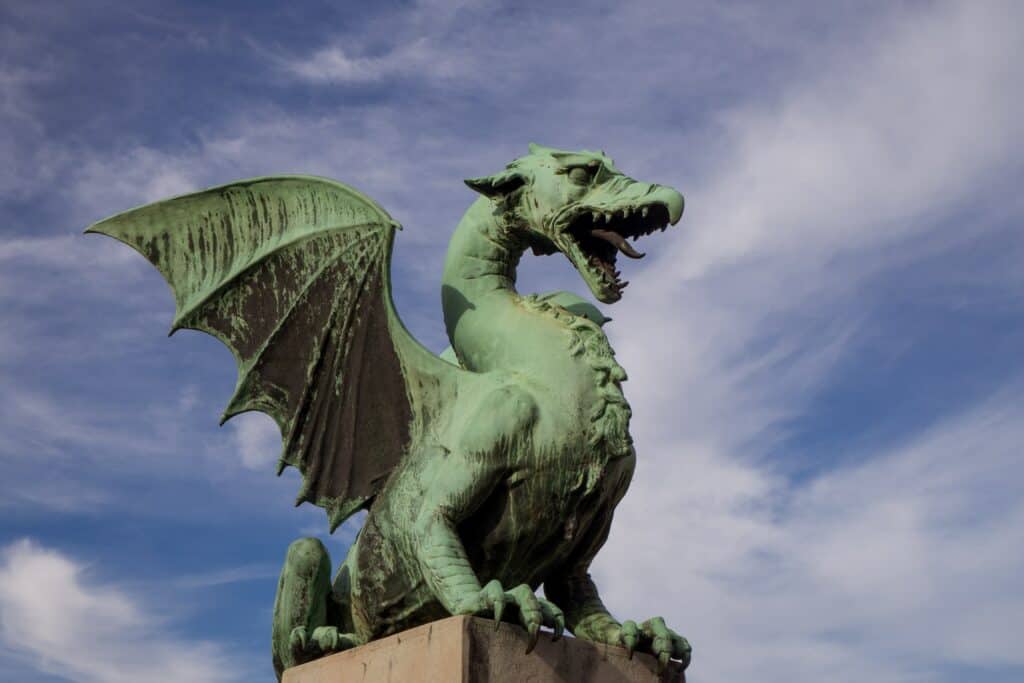
What do you think about Celtic Gods and Goddesses?
What are your thoughts on Celtic Gods and Goddesses? Which Ancient Celtic Gods and Goddesses from the Ancient Celtic Pantheon is your favourite? Let us know in the comments below.
If you have enjoyed our article about the Pagan and Celtic Gods and Goddesses, why not explore our site for more historical and mythological sites which delve deeper into the many stories of Celtic Gods?
More Interesting Mythology Blogs by ConollyCove: Legend of the Selkies | Mythical Monsters in Irish Folklore | Scáthach: The Most Infamous Warrior | Finest Legends and Tleales of the Irish Mythology


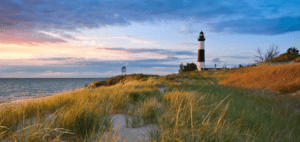




Amazing article! It would be nice to have a real book of this to peruse at leisure.:)
Glad you enjoyed the blog 🙂
Ok I thought it was weird of me that I follow mainly celtic paganism but believe in gaia the Greek earth goddess. But there often shared.
Glad you enjoyed the blog, Tiffany 🙂